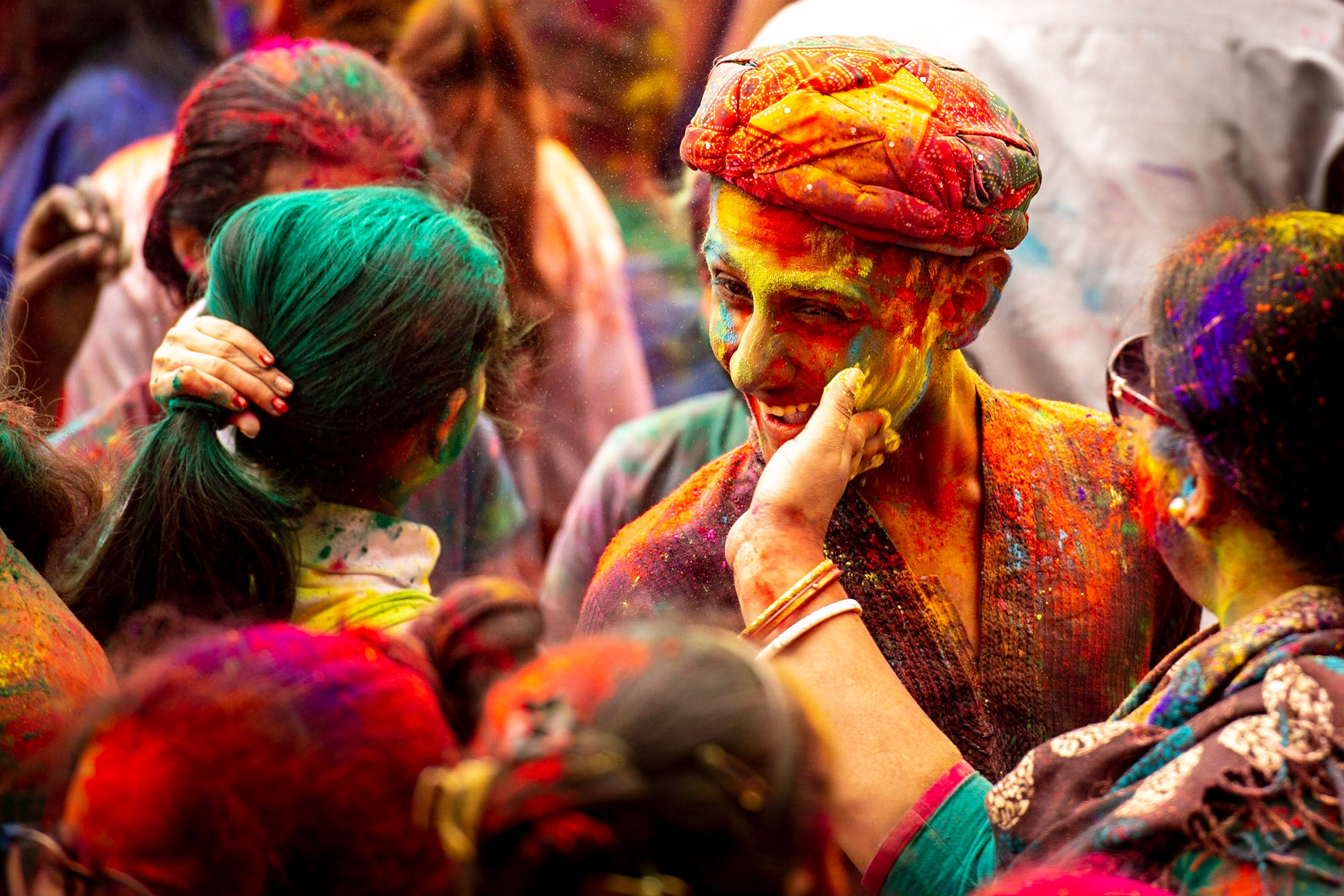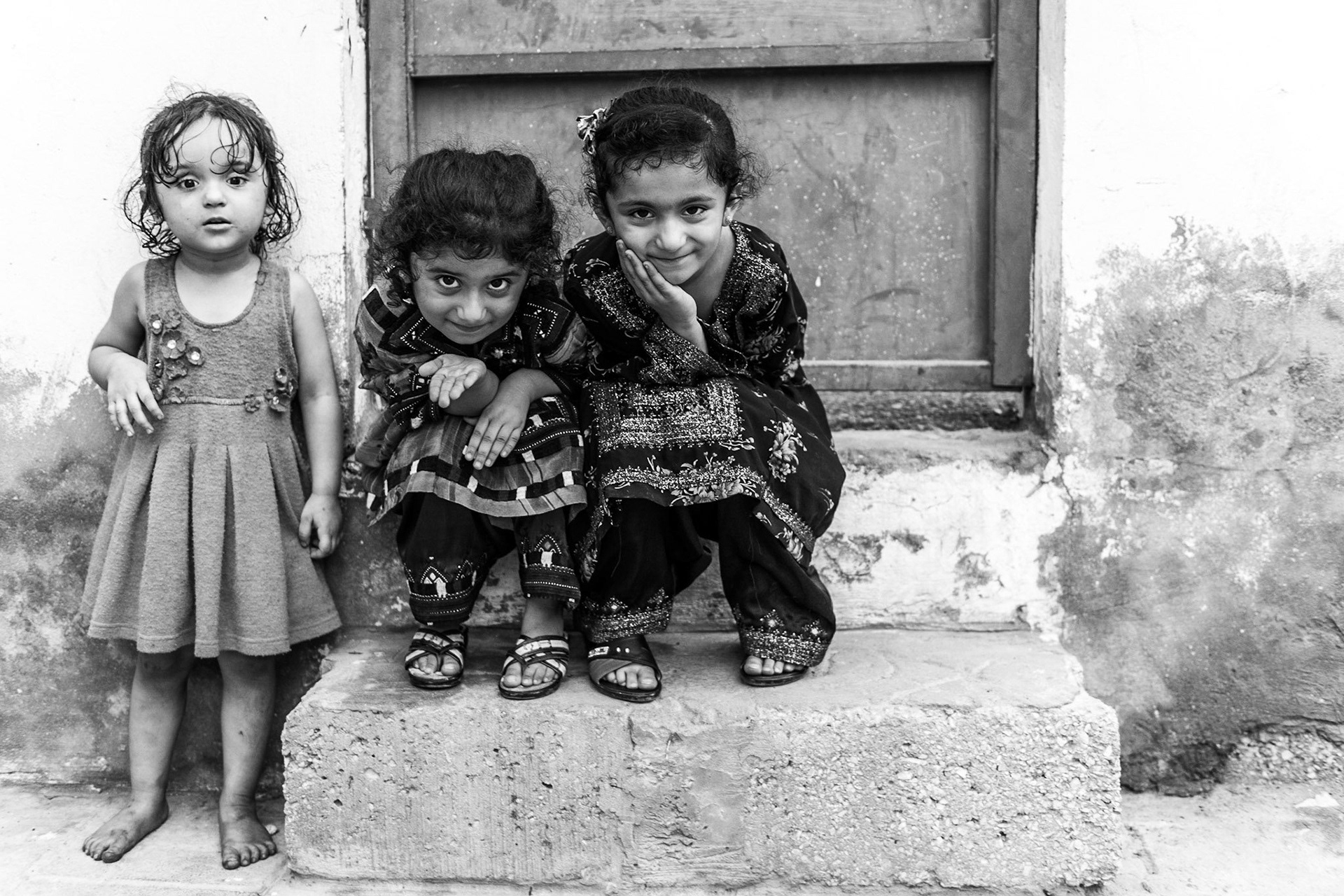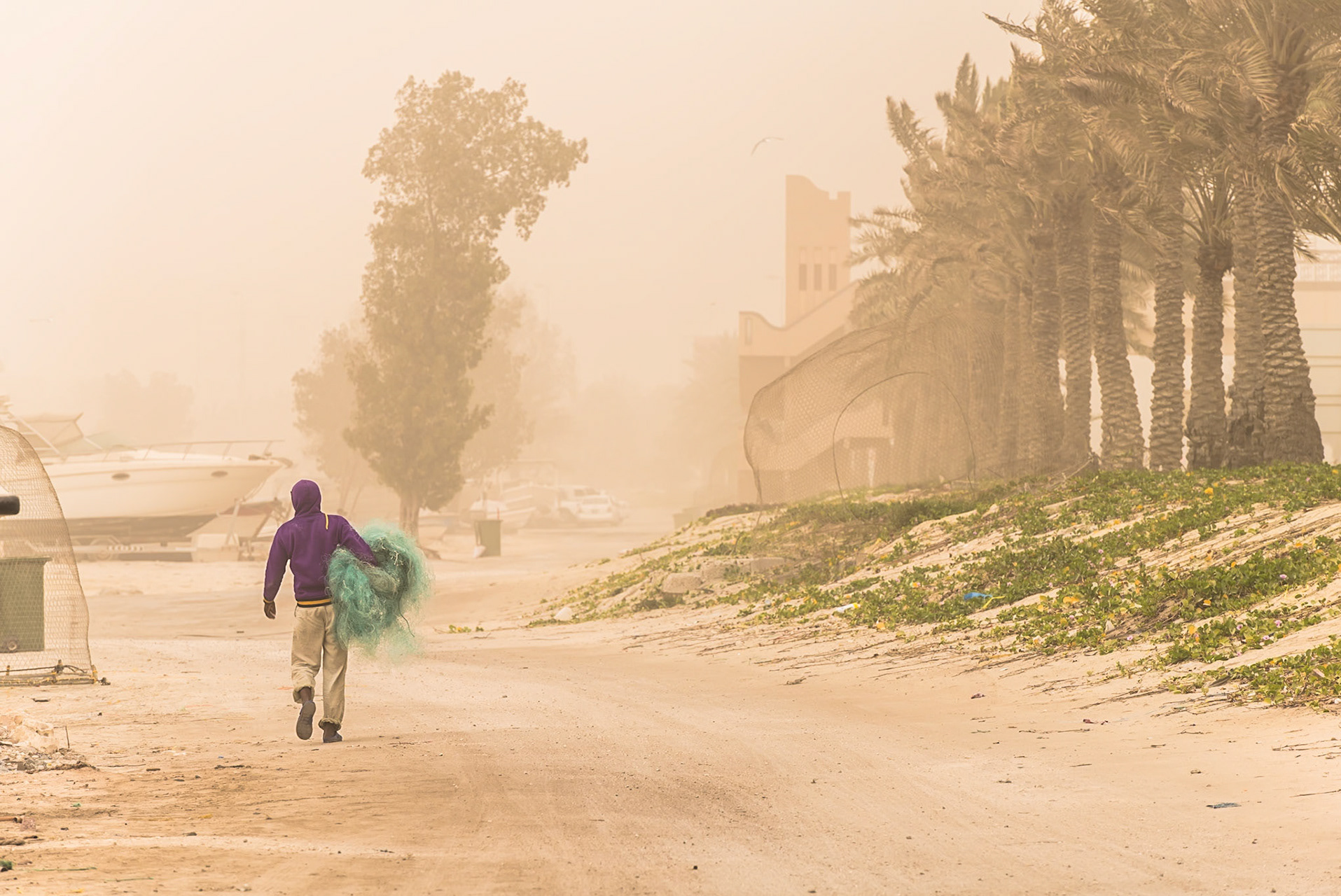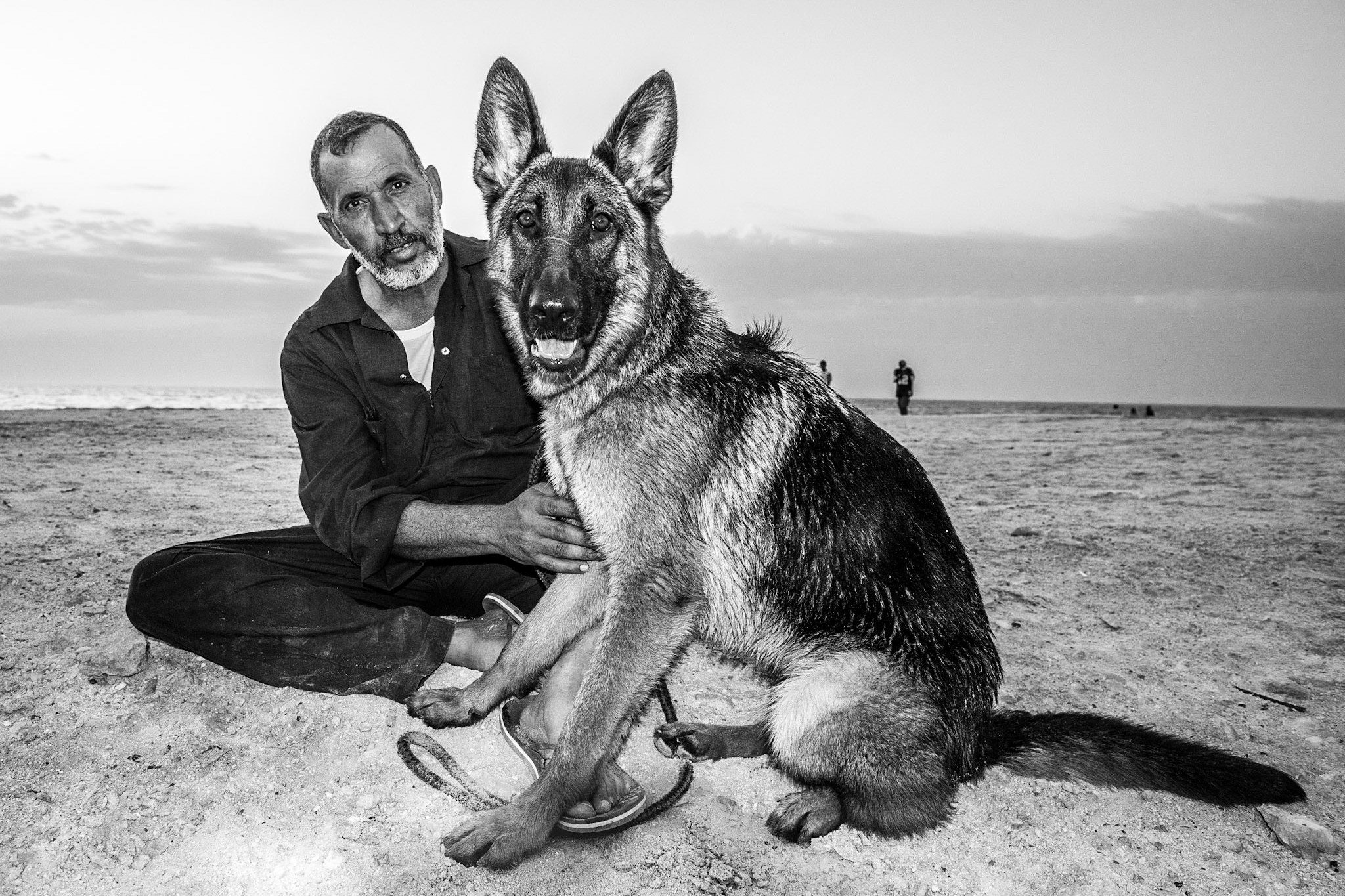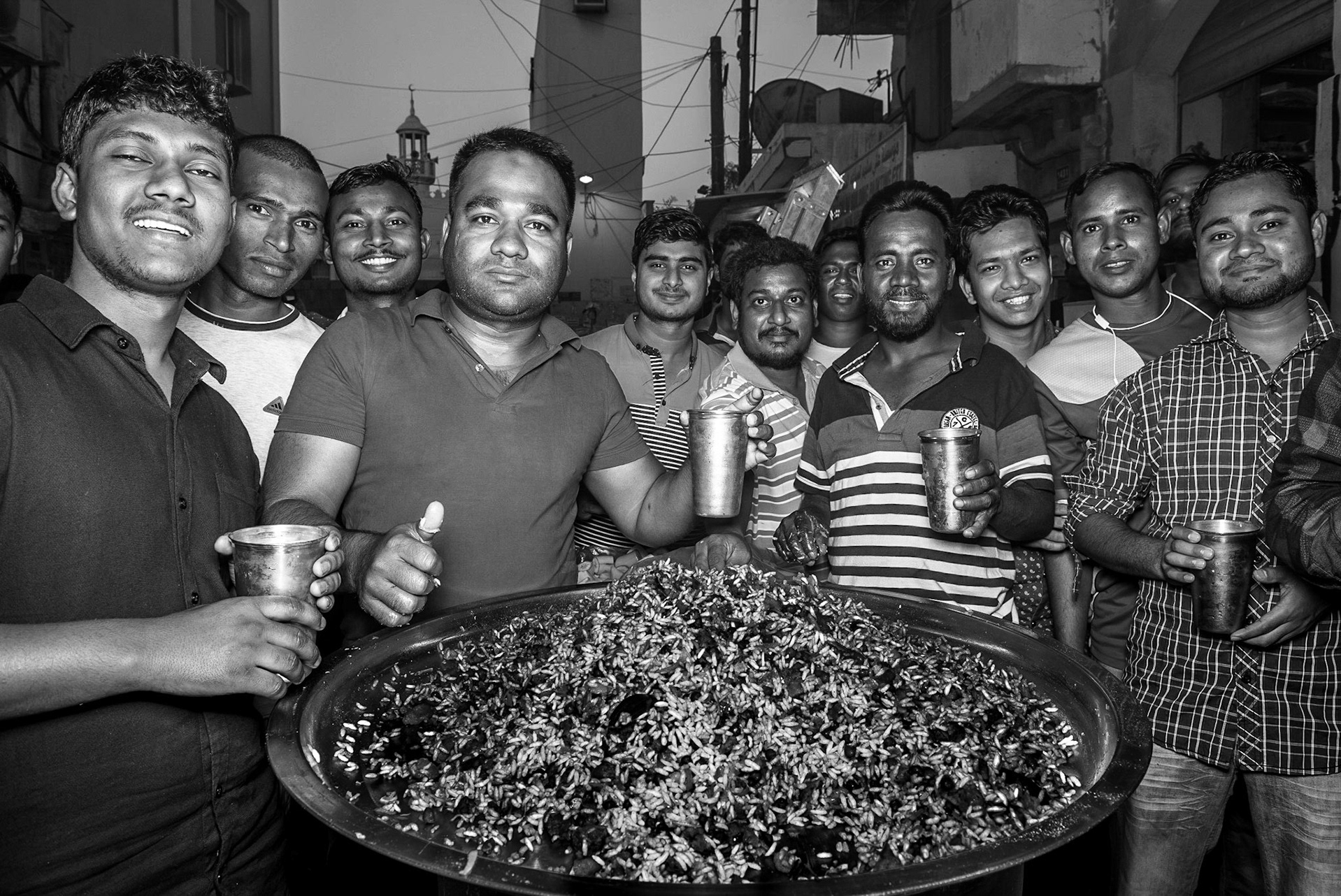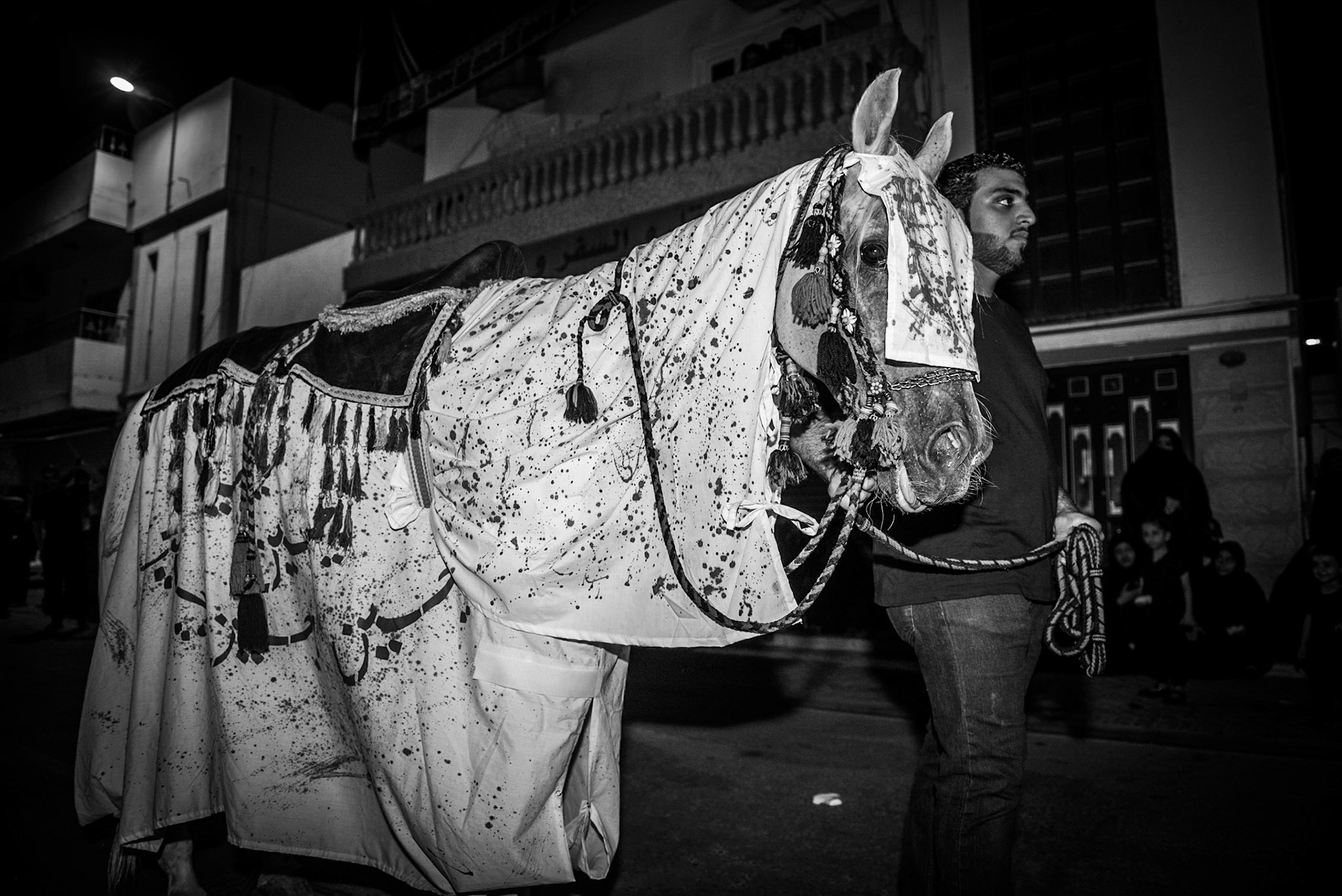
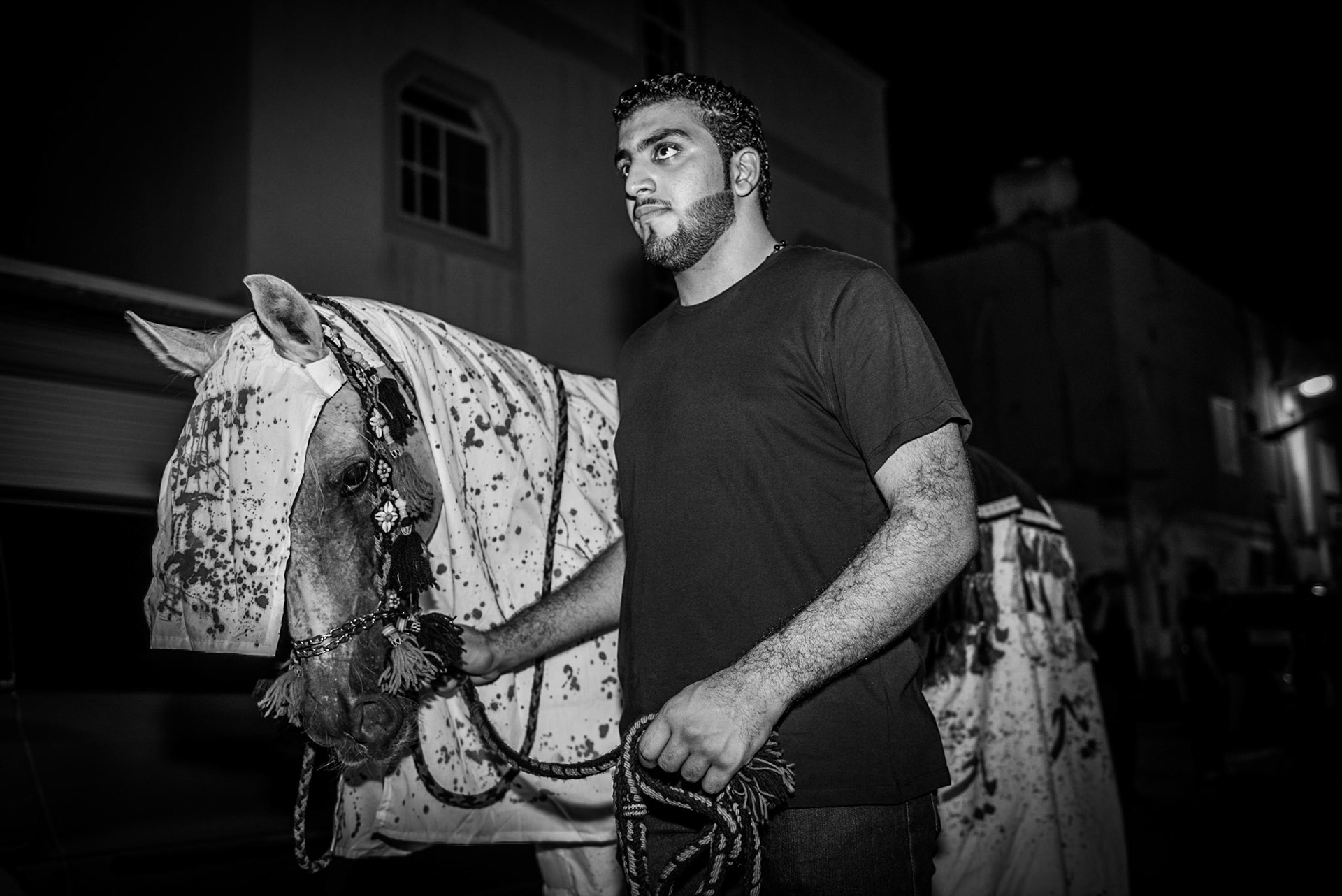
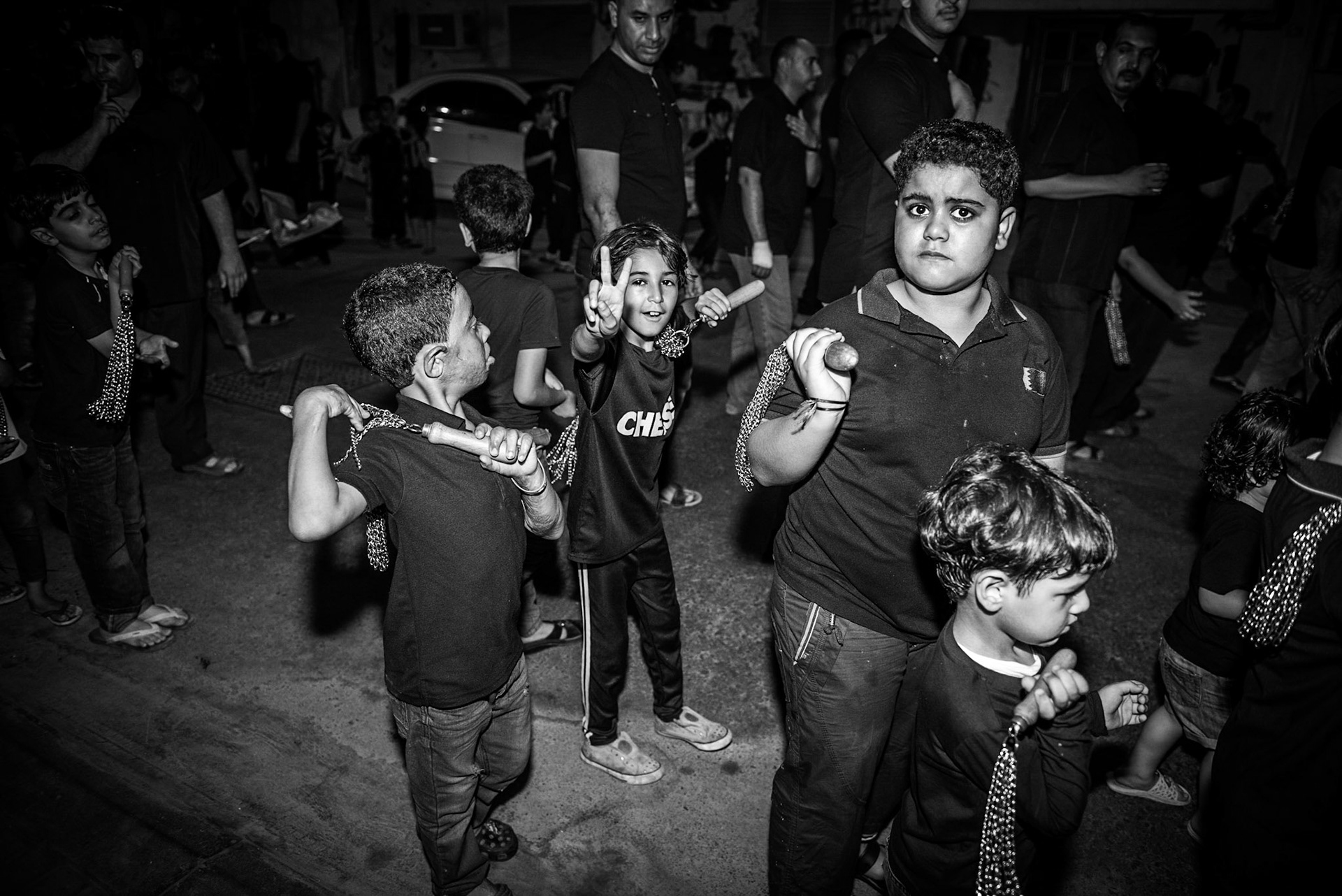
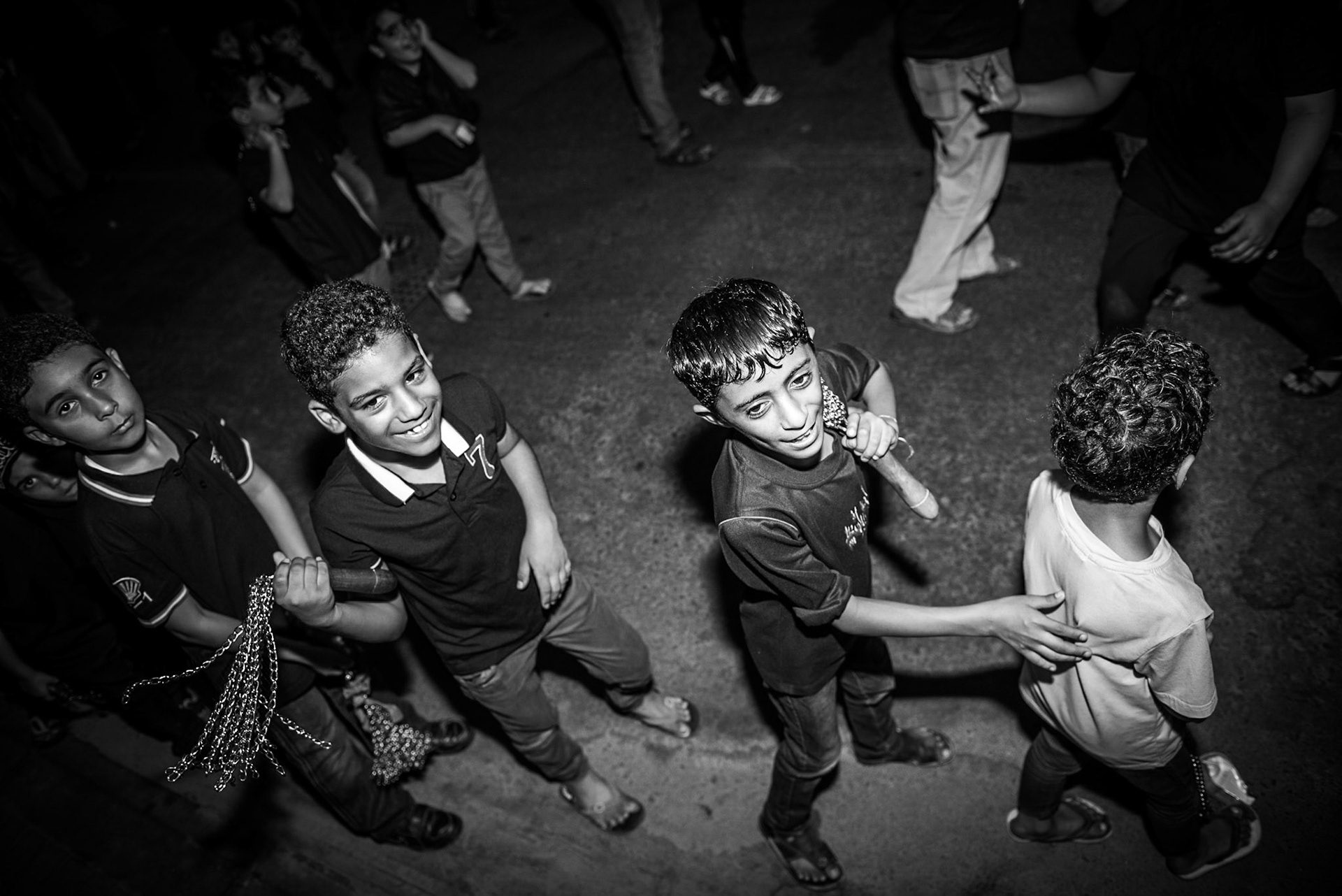
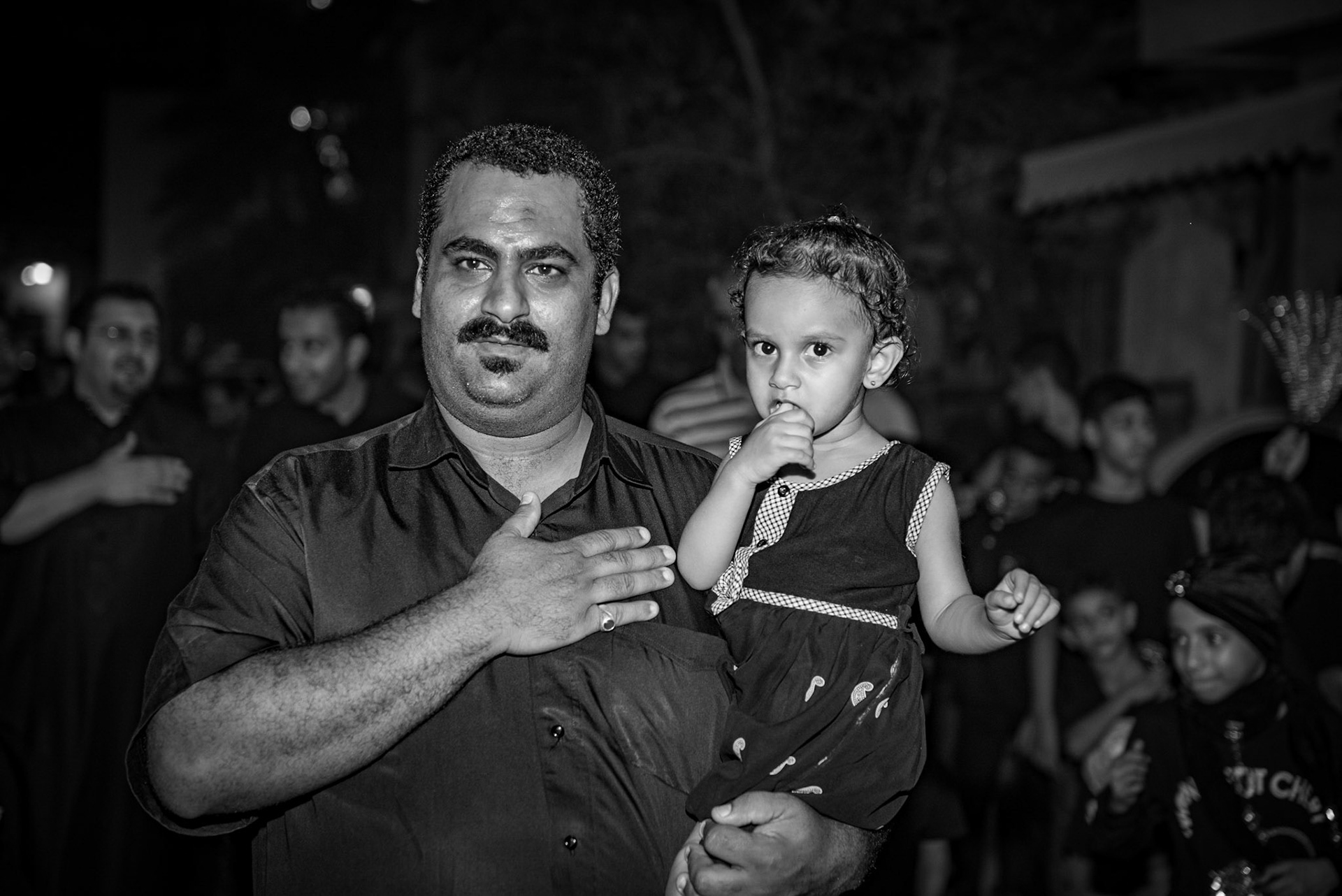
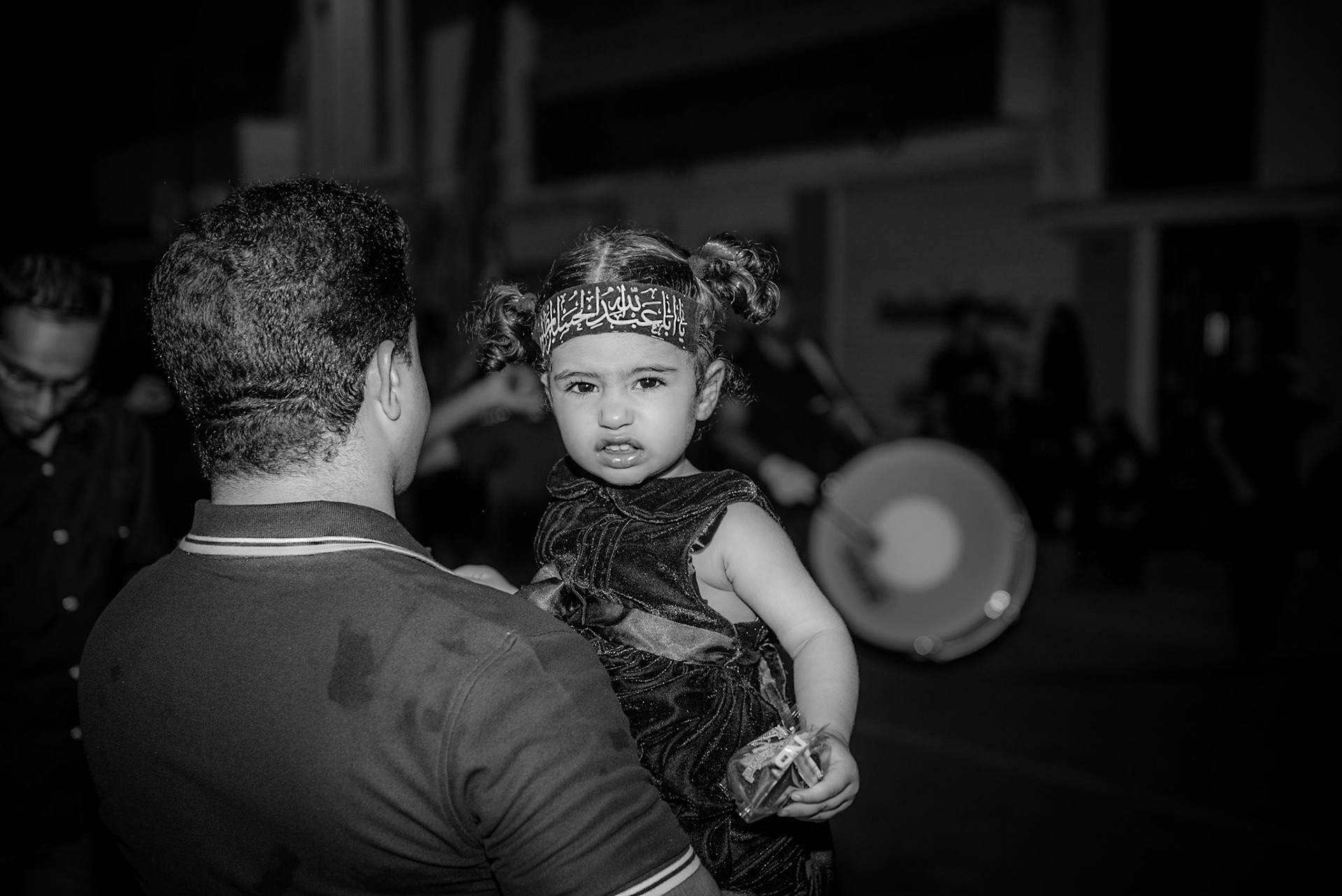
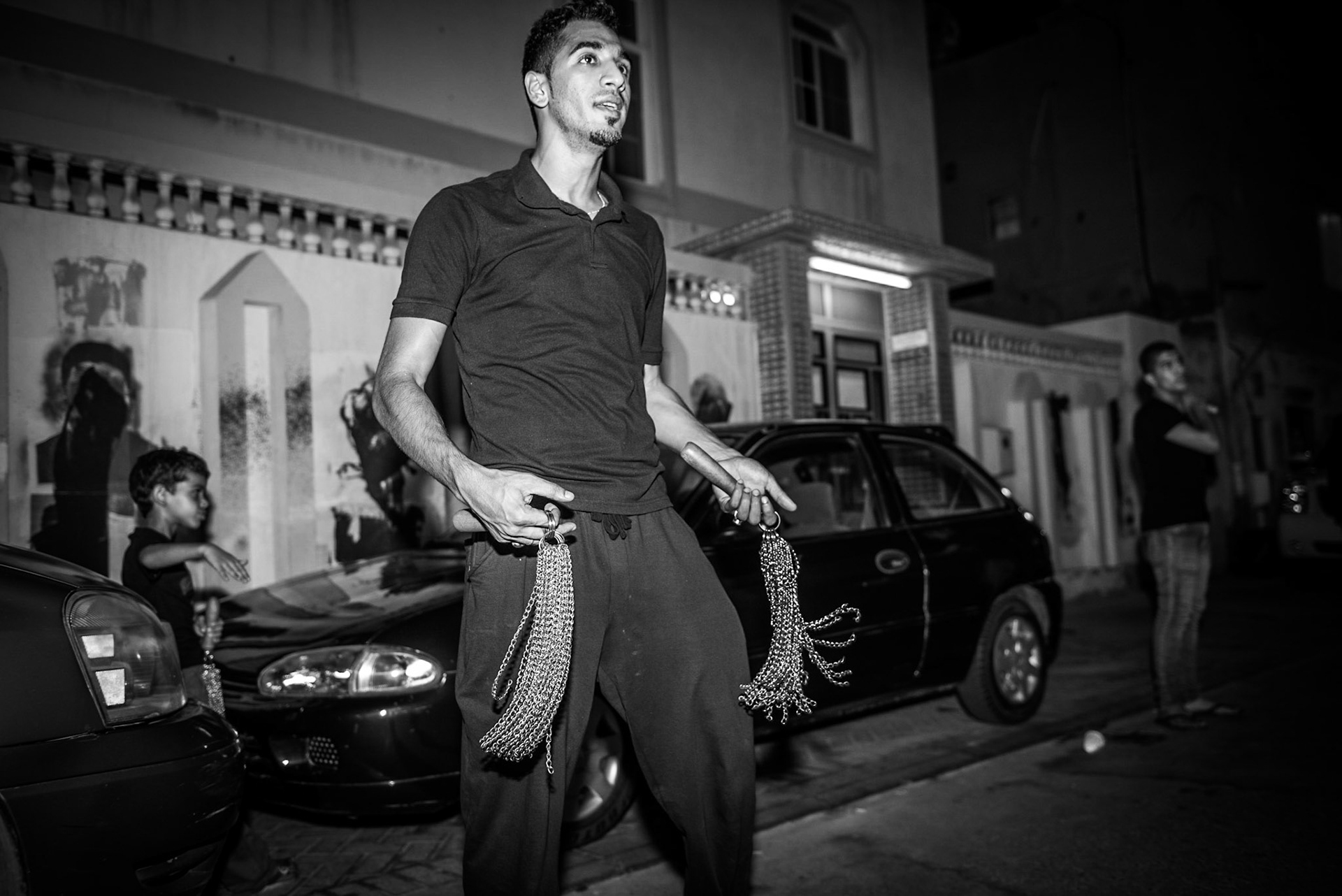
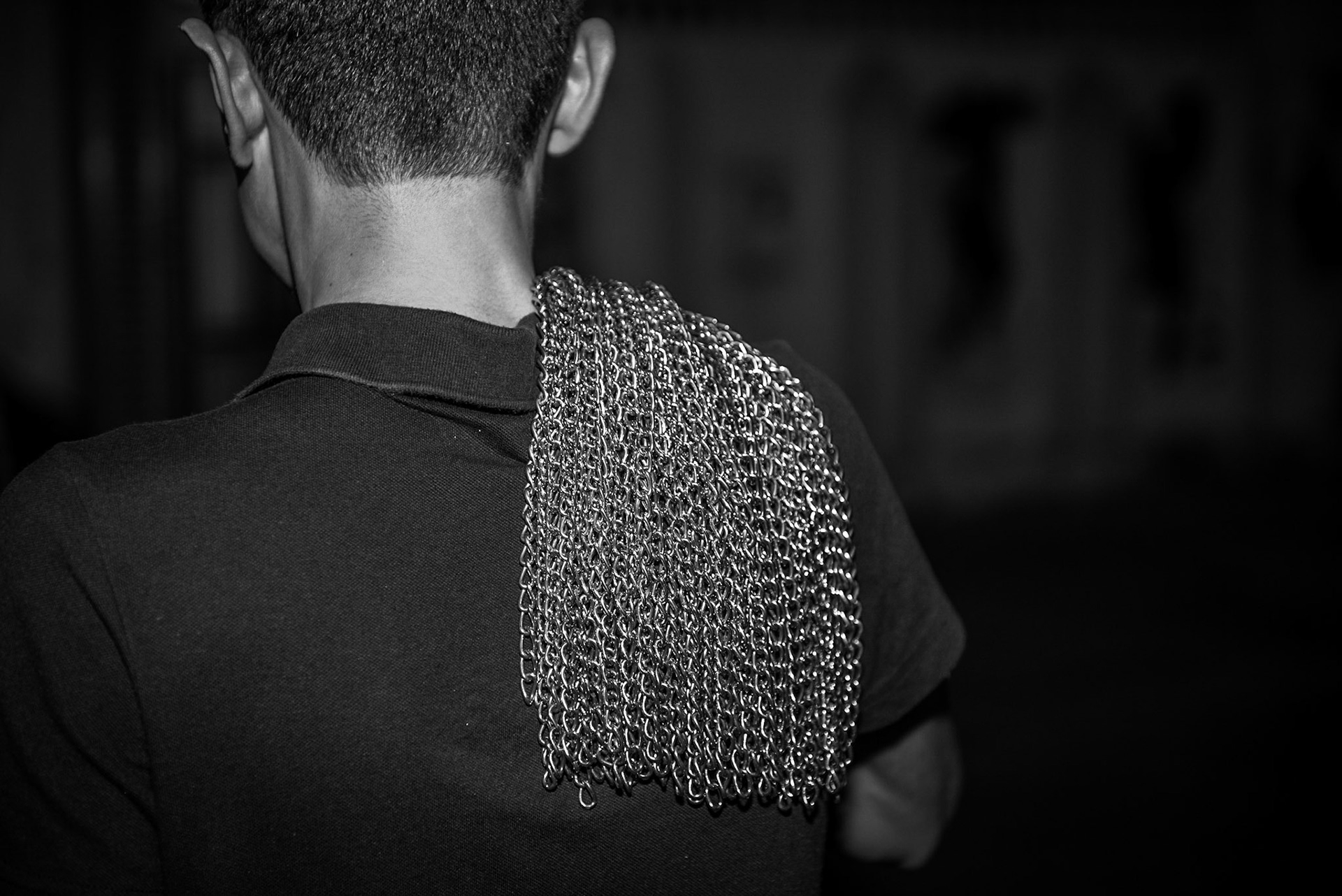
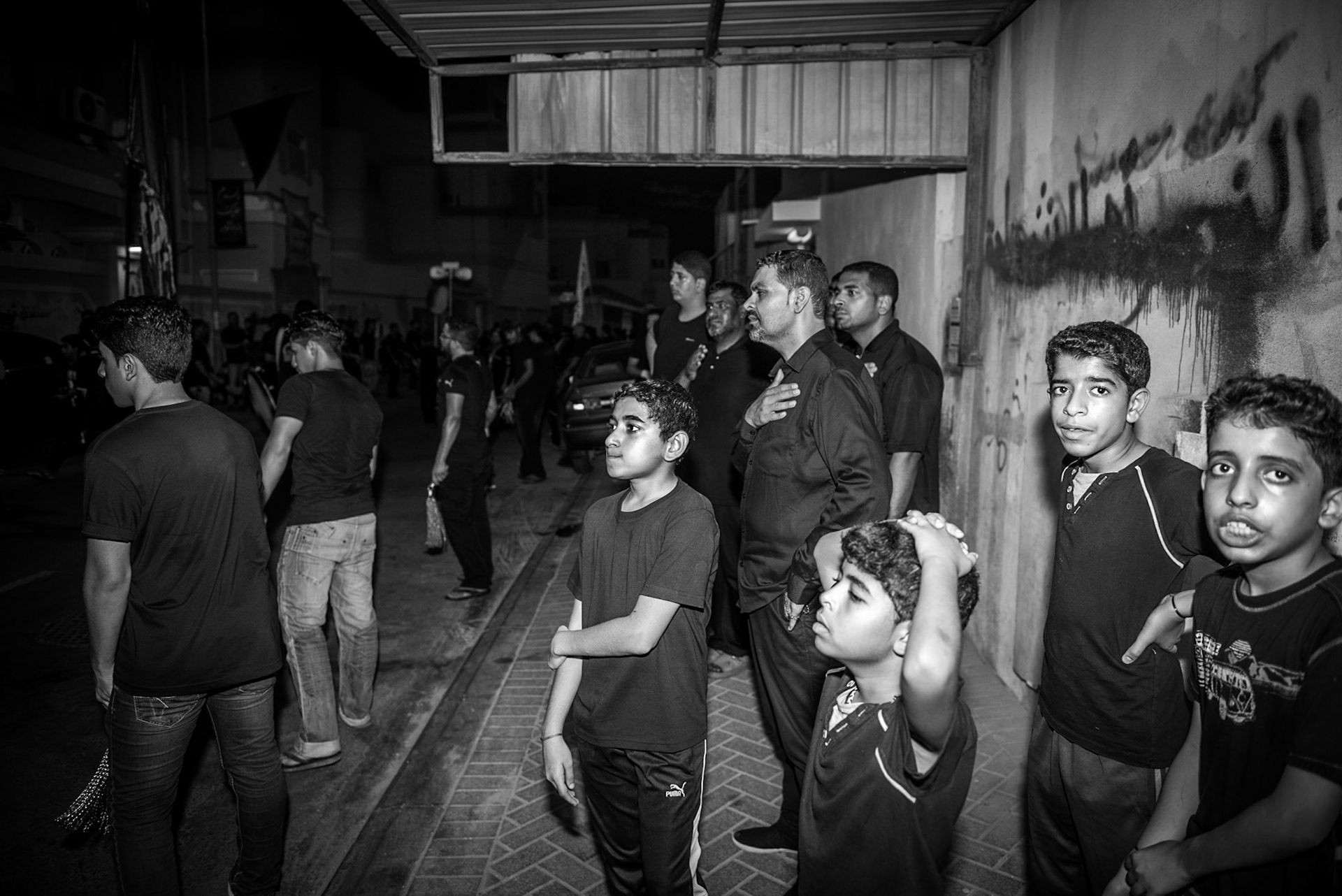
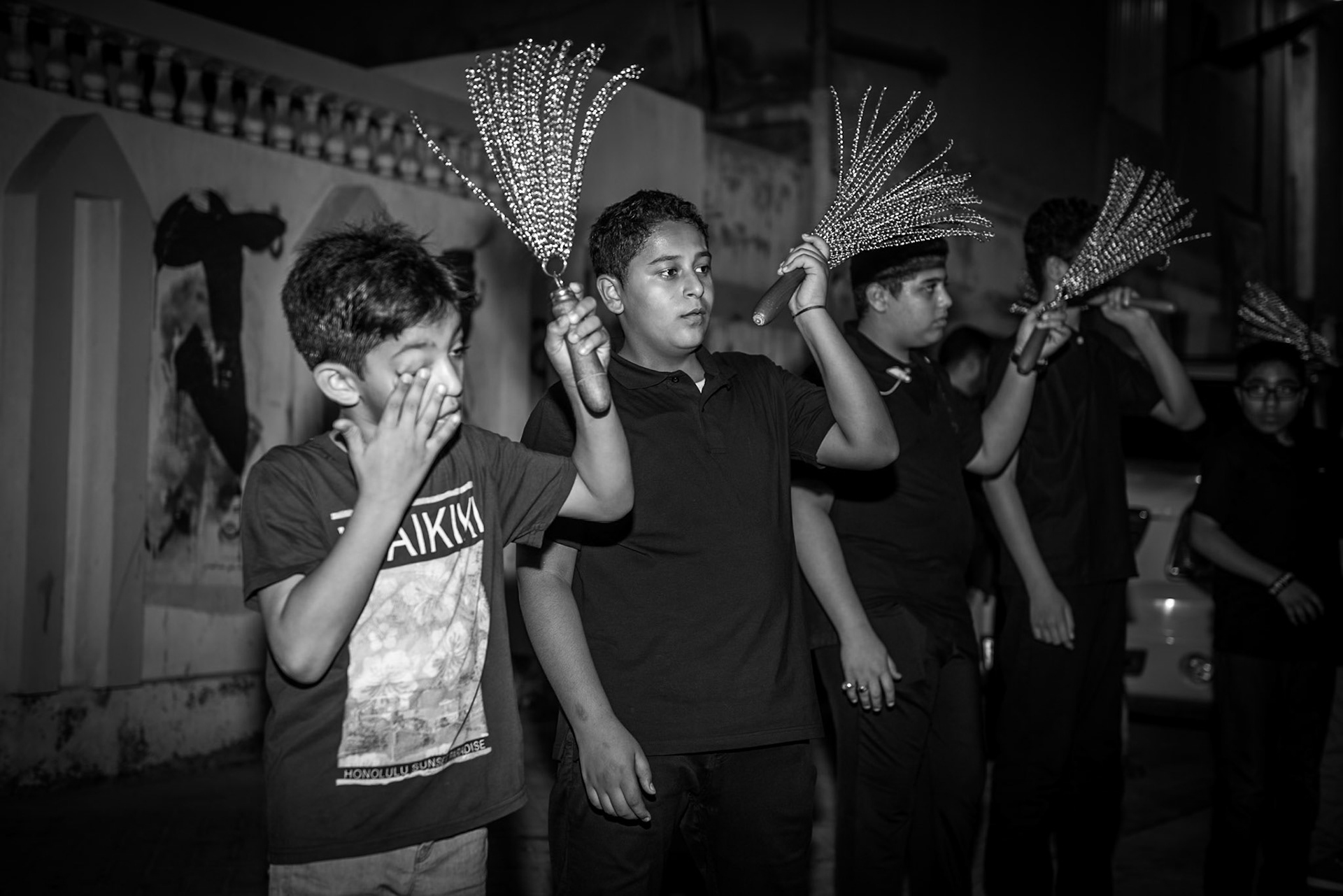
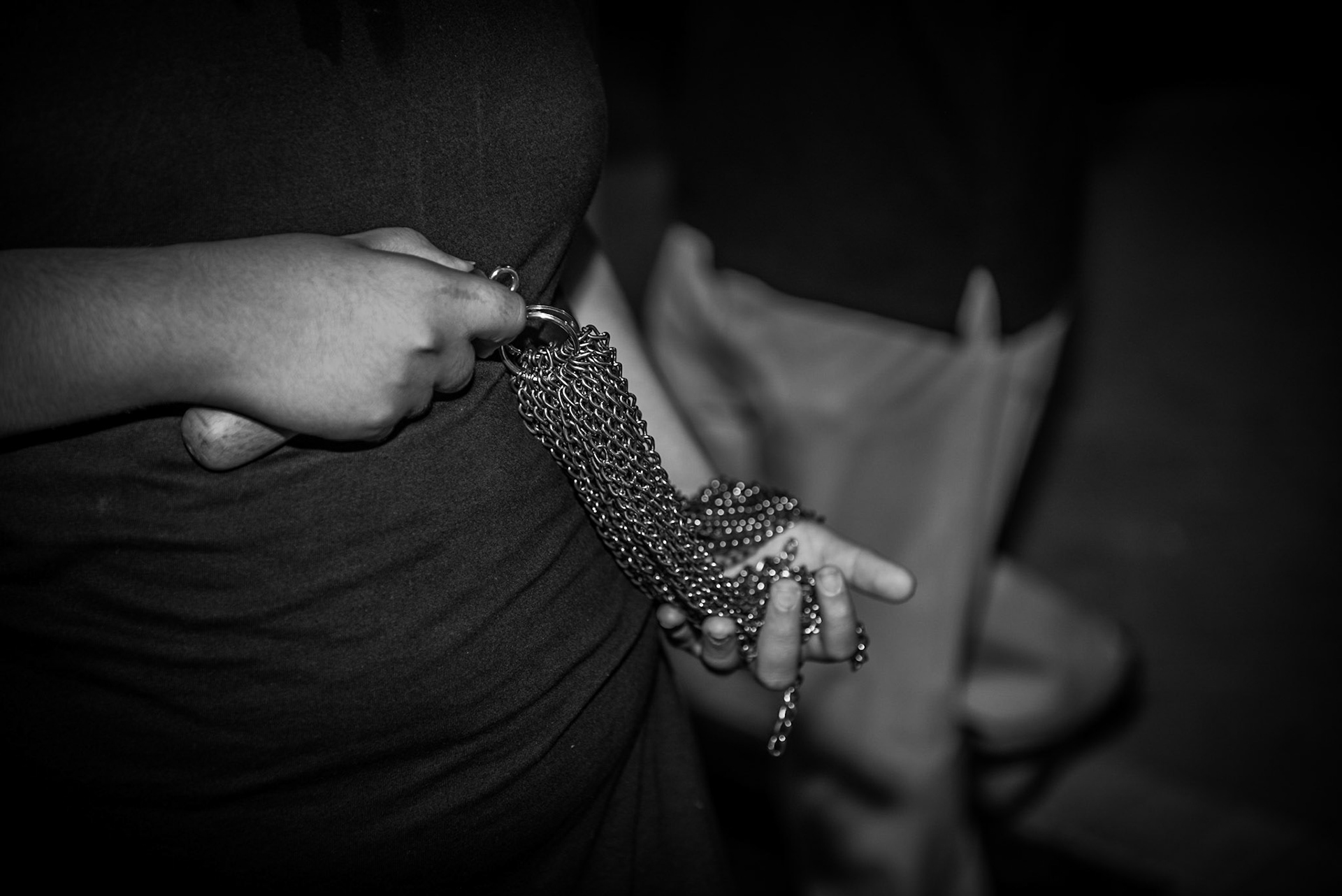
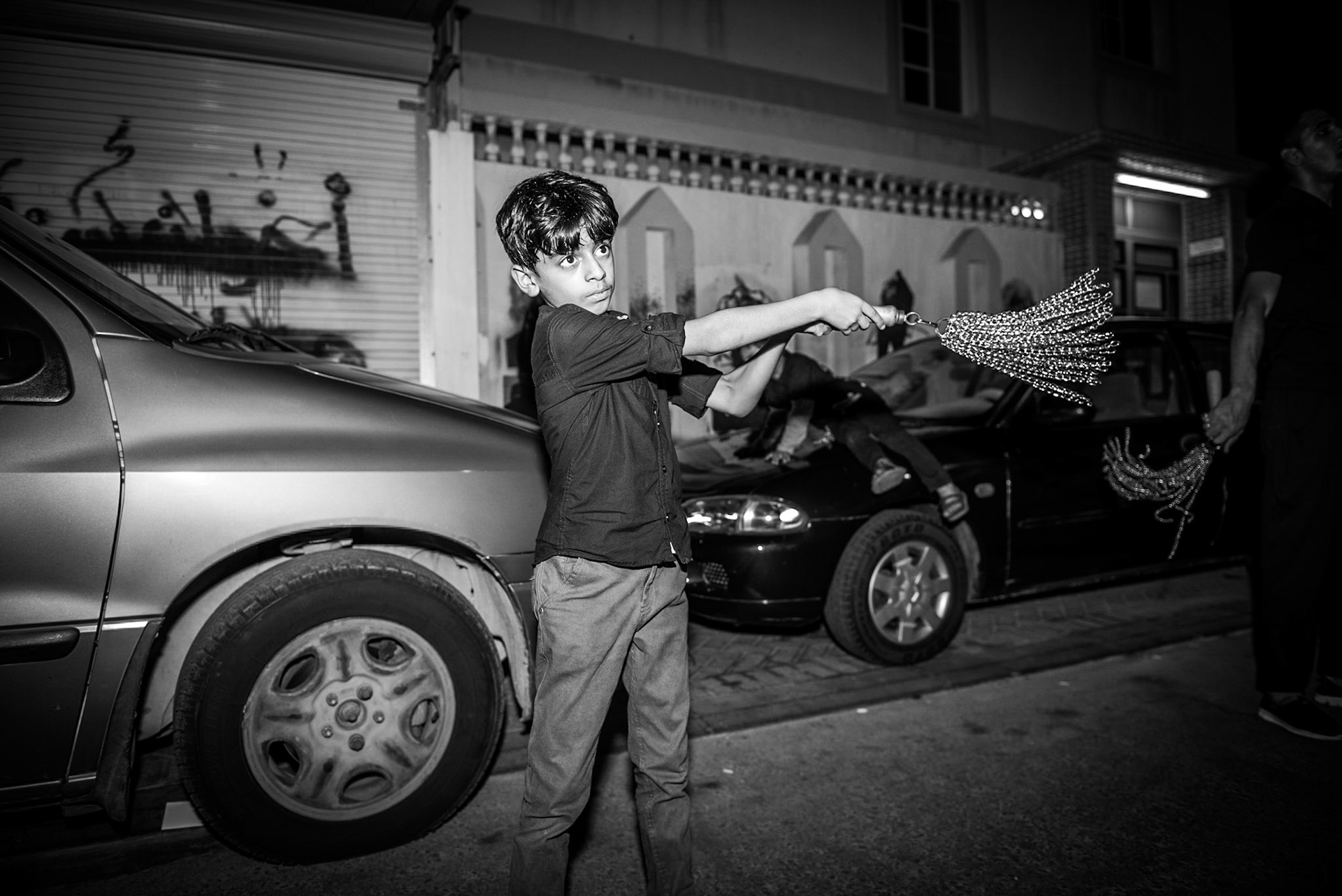
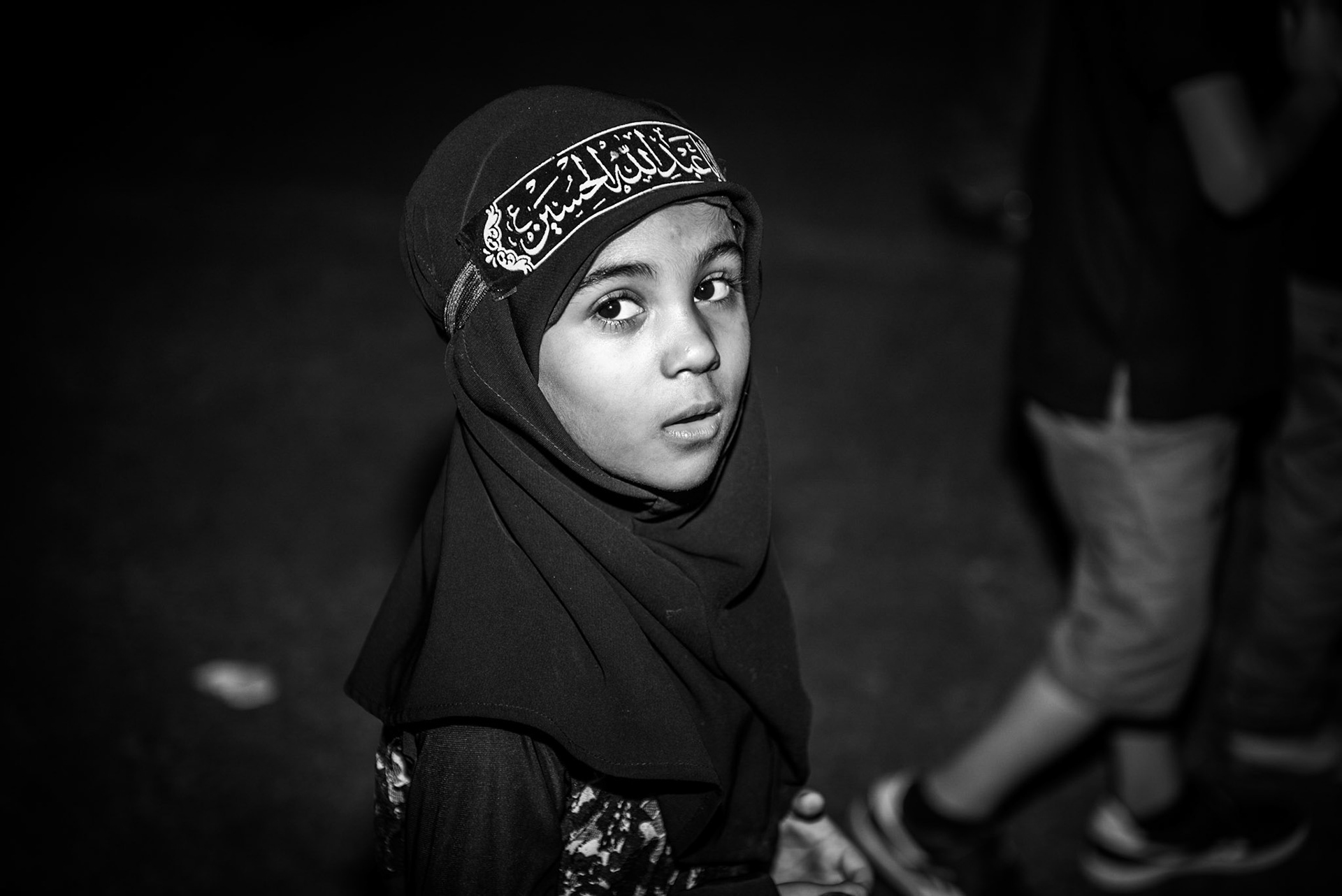
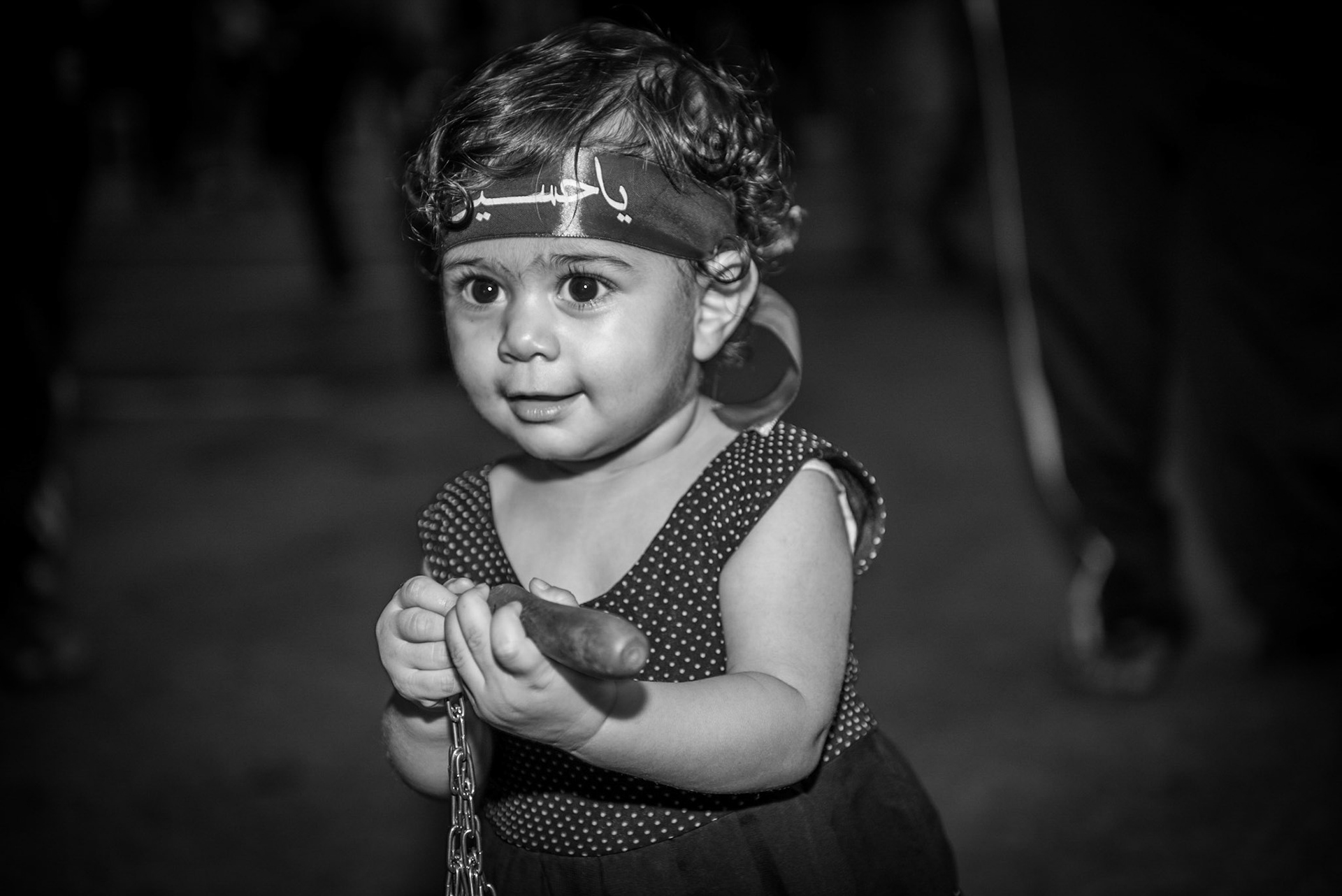
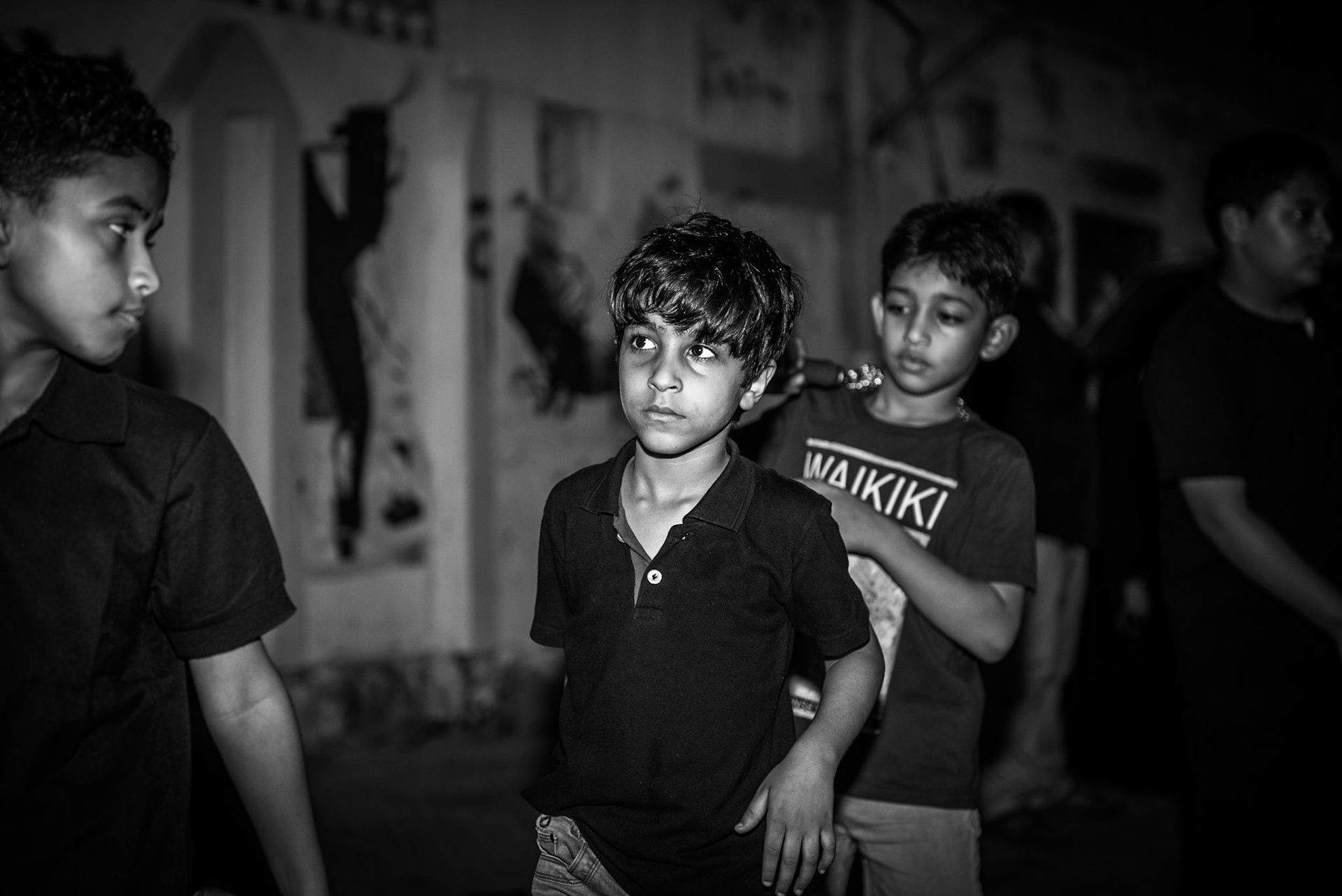
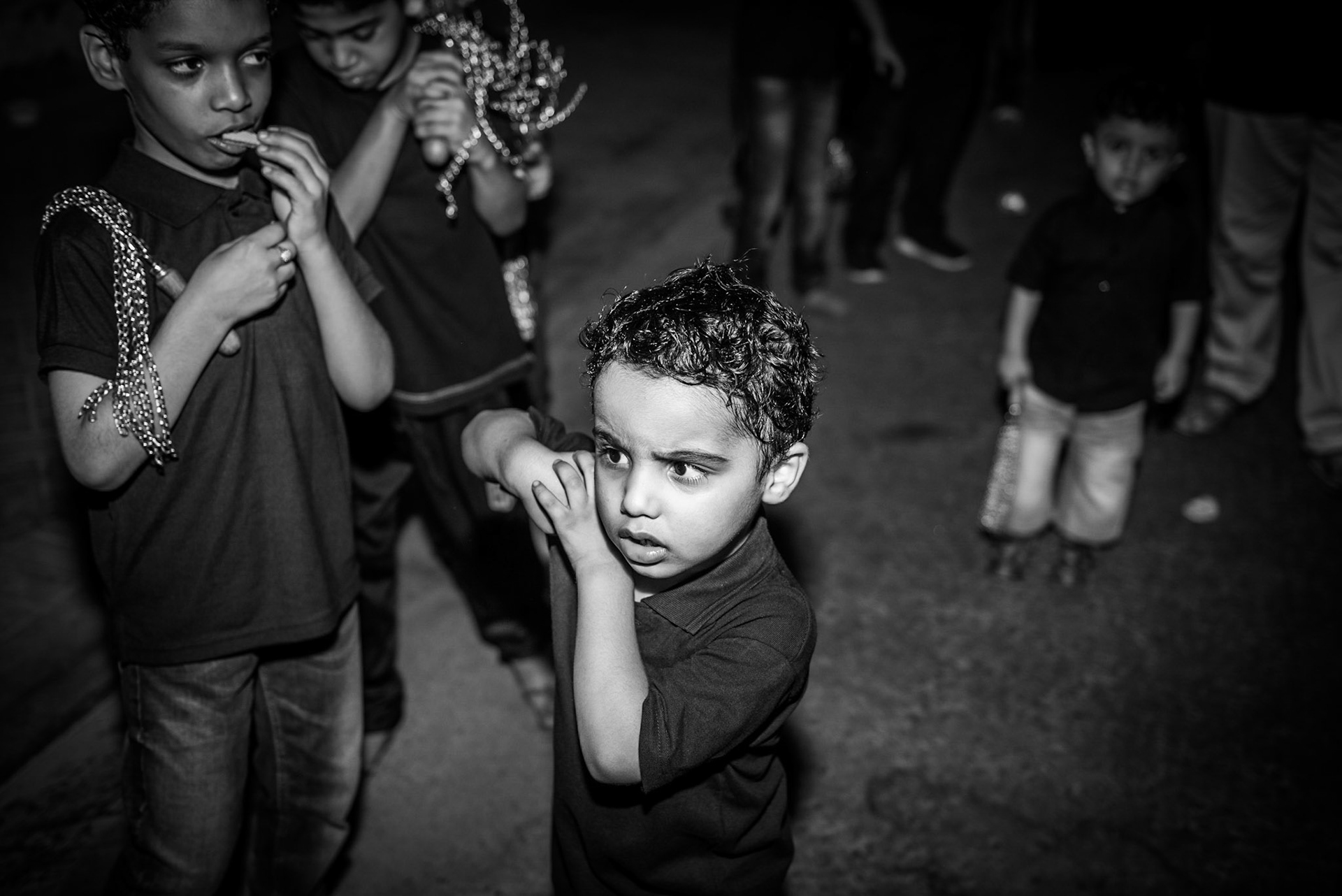
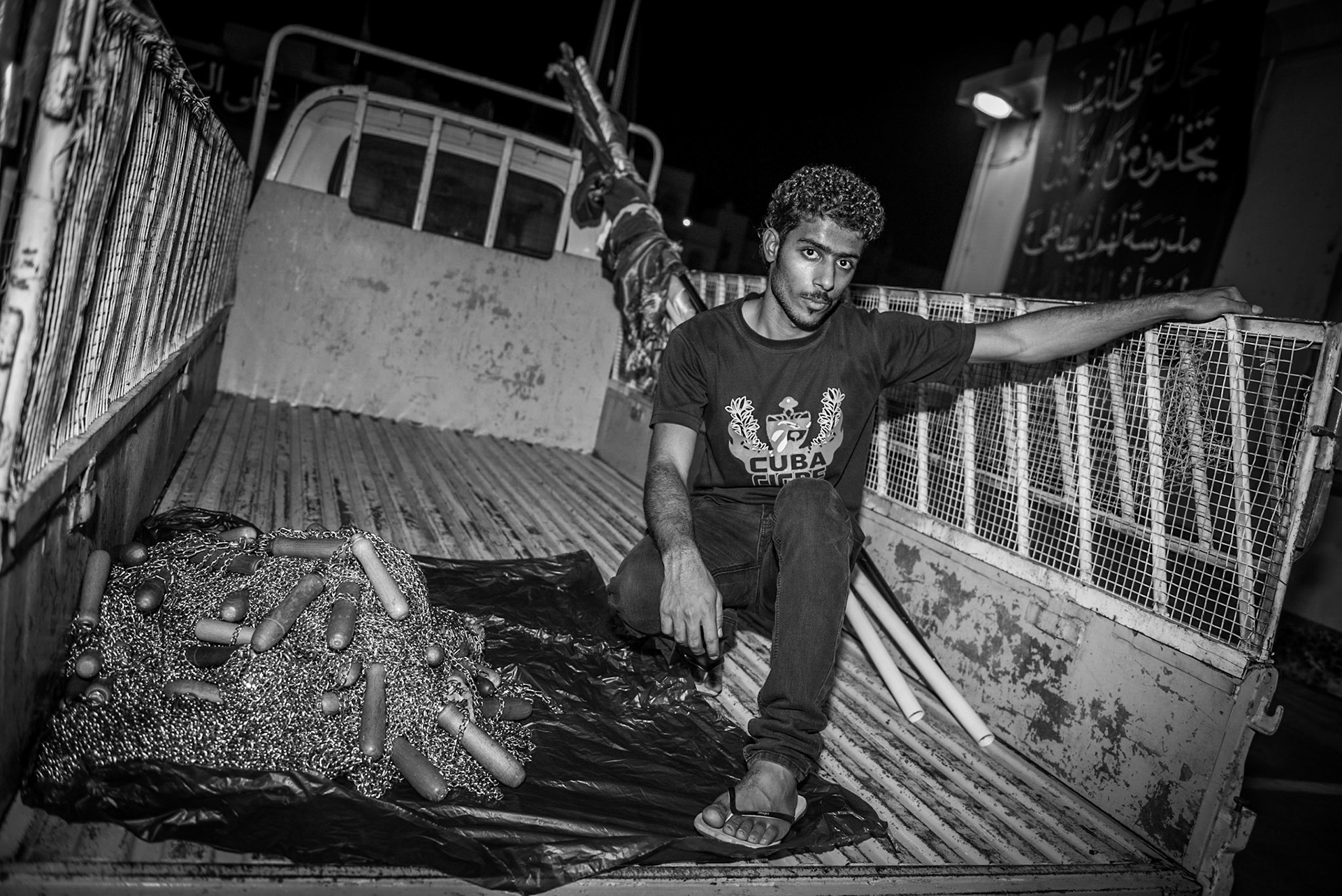
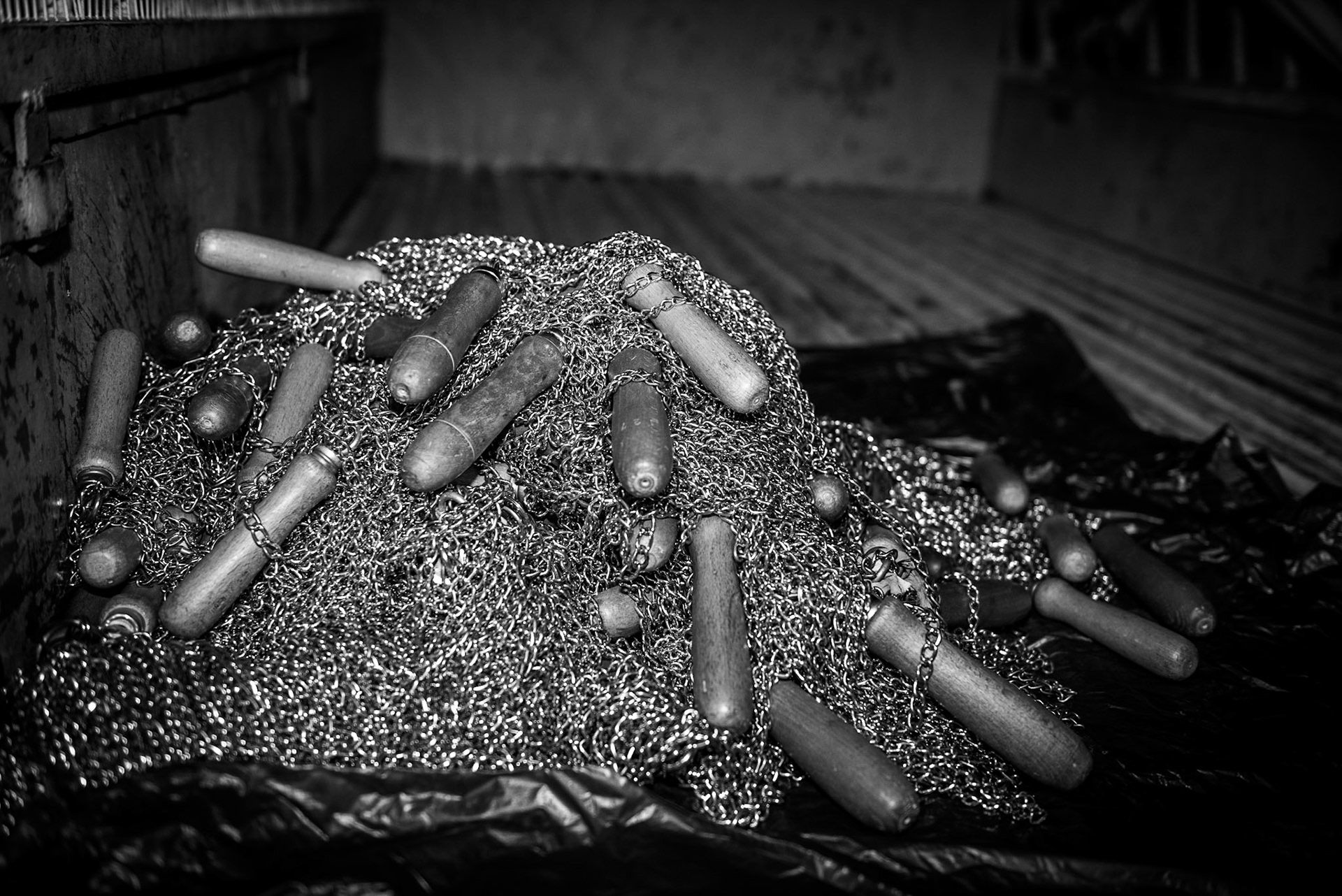

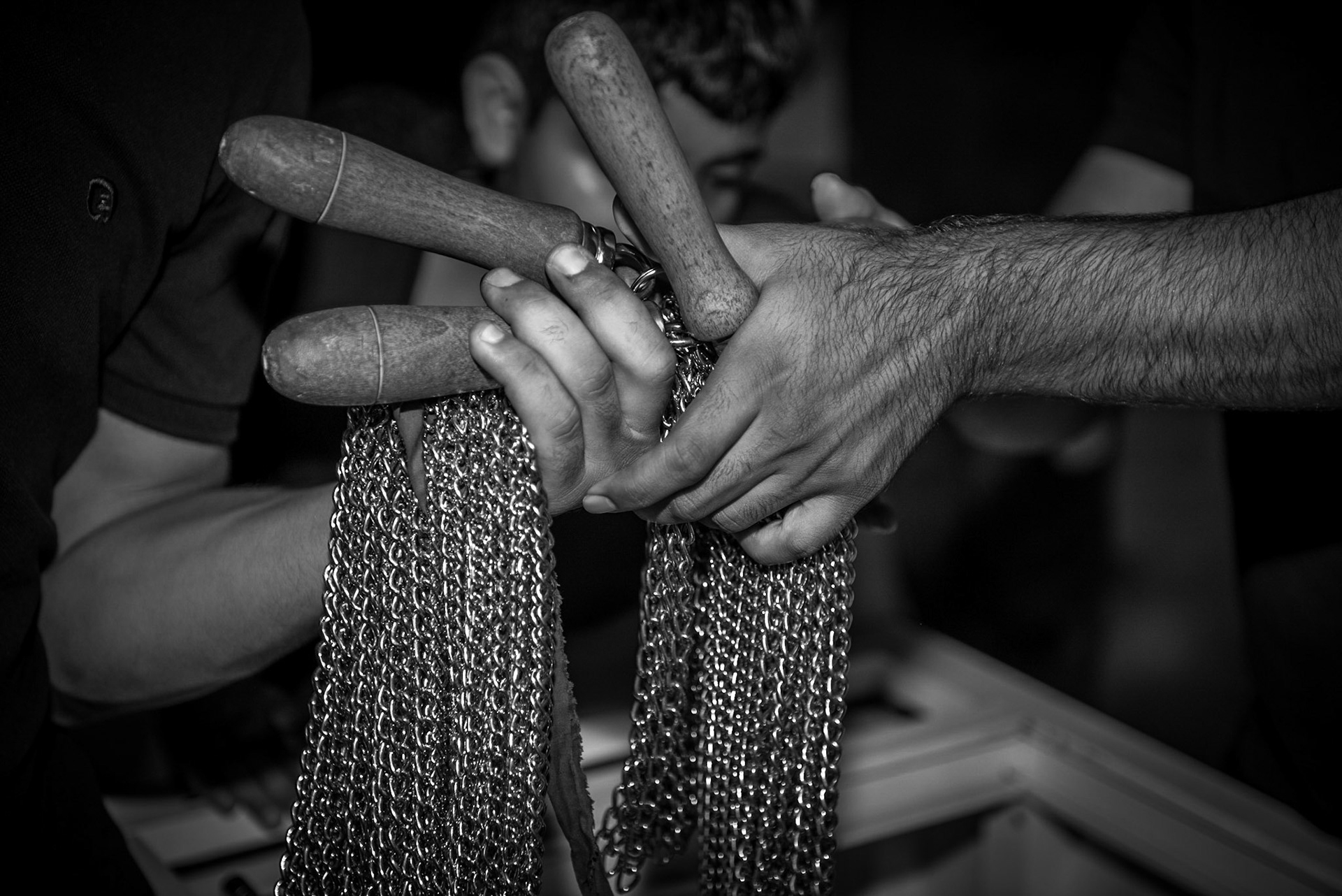
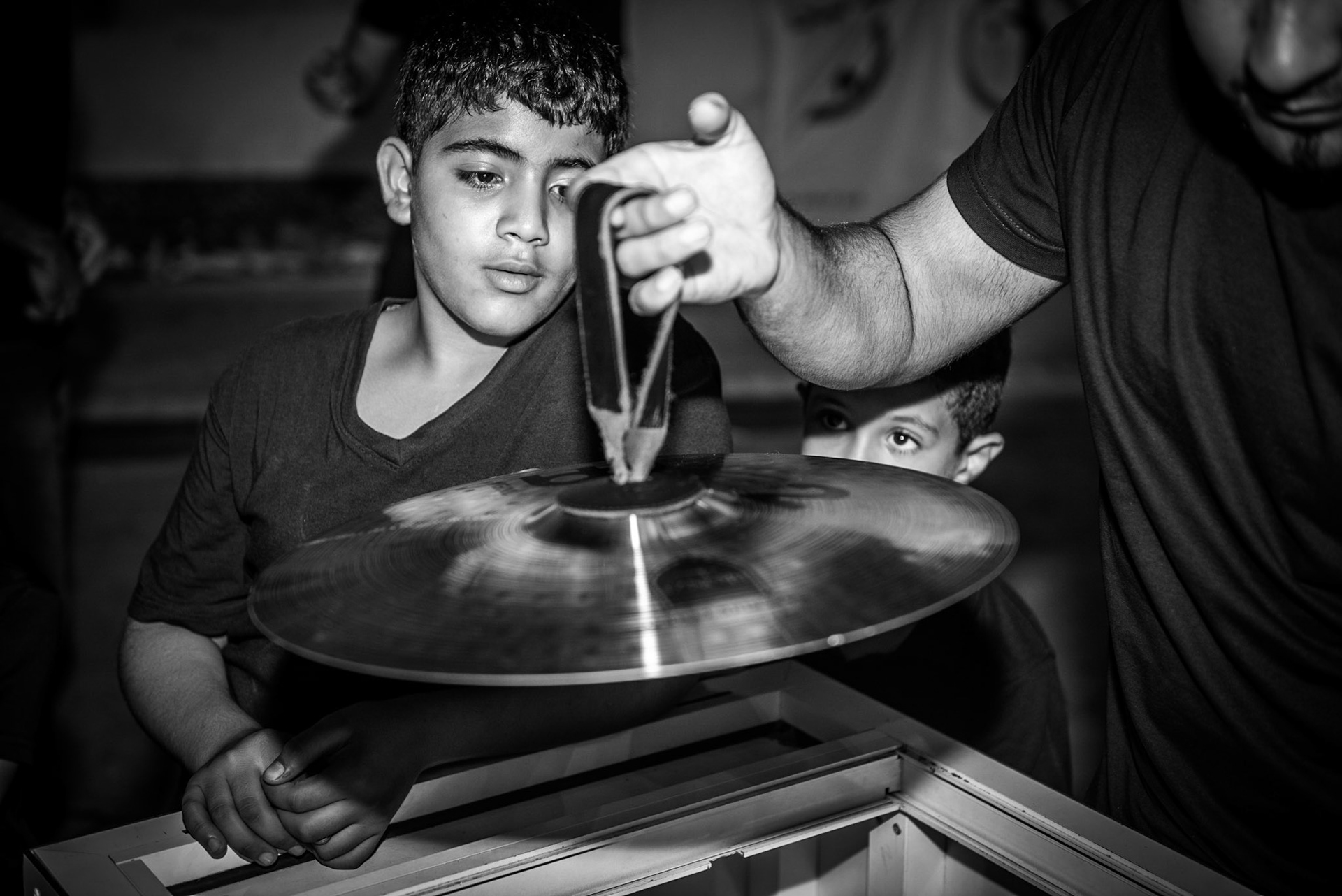
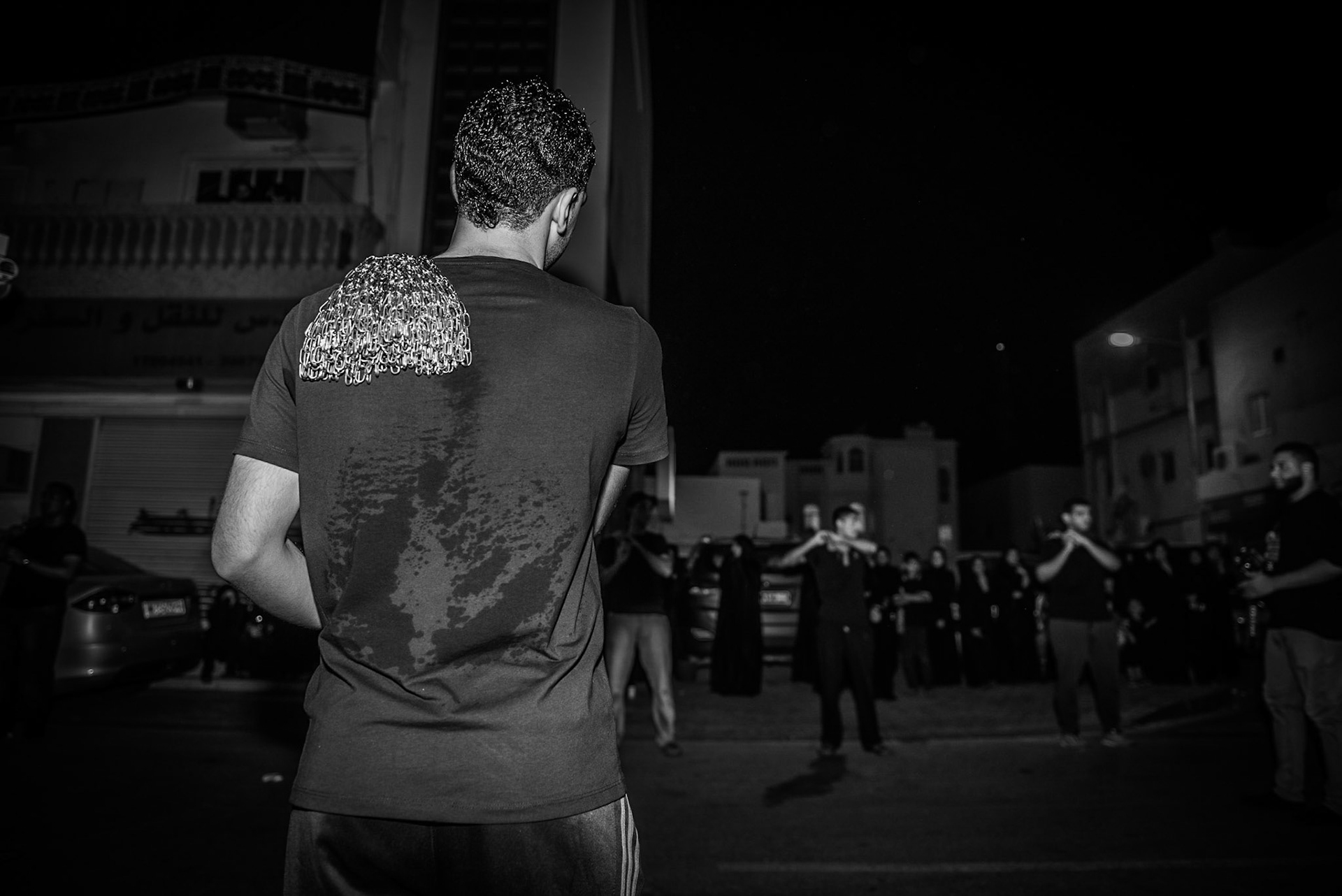
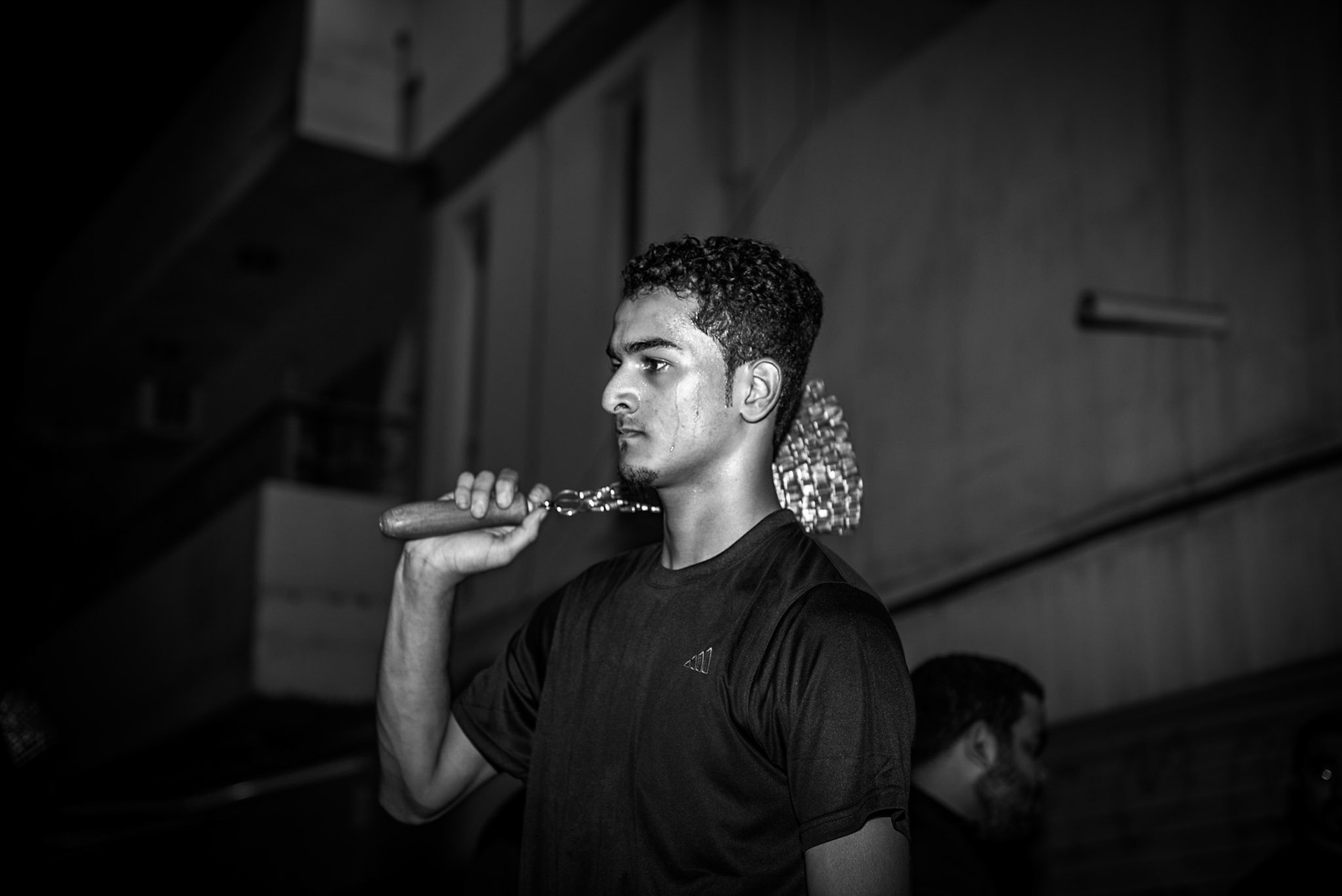
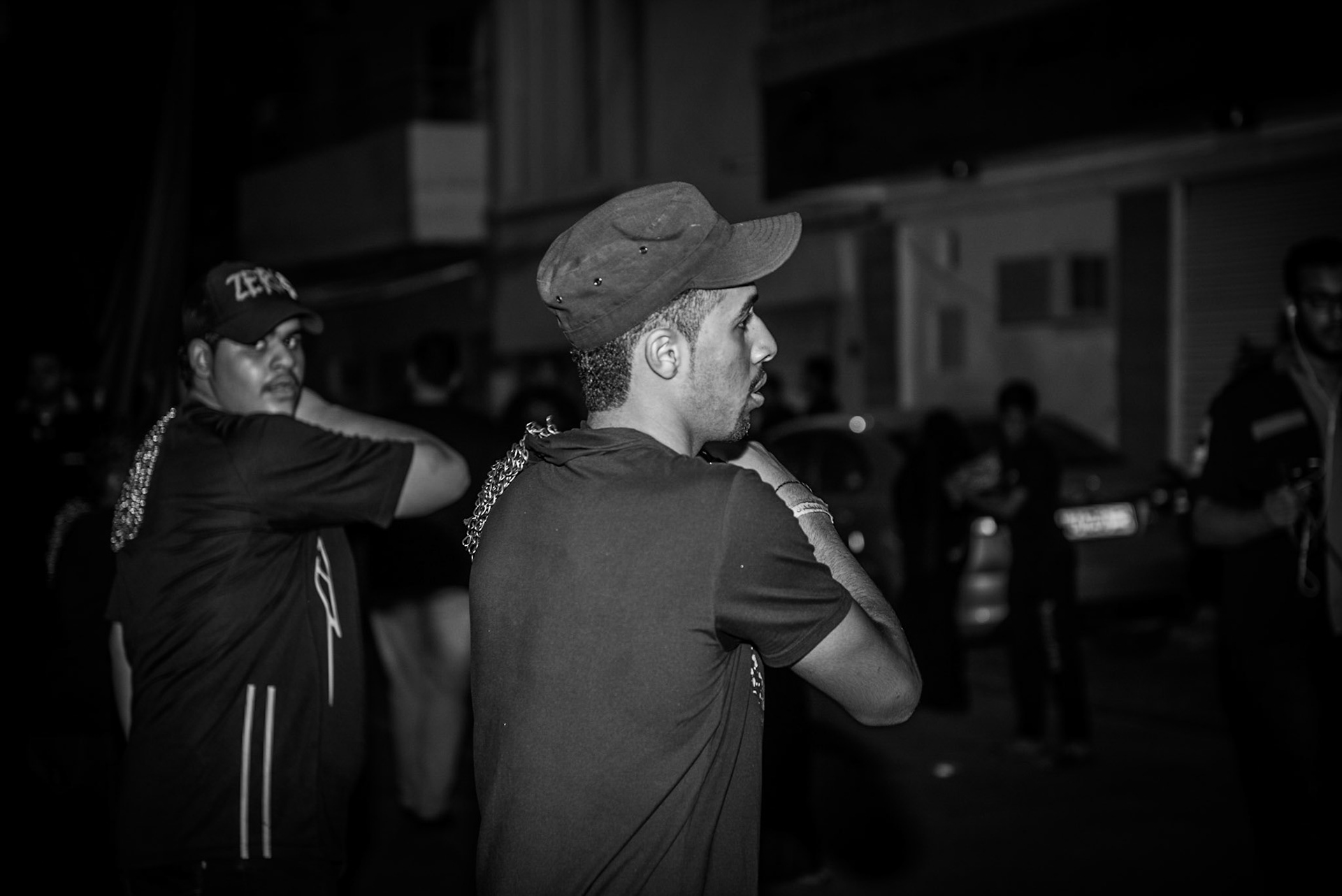
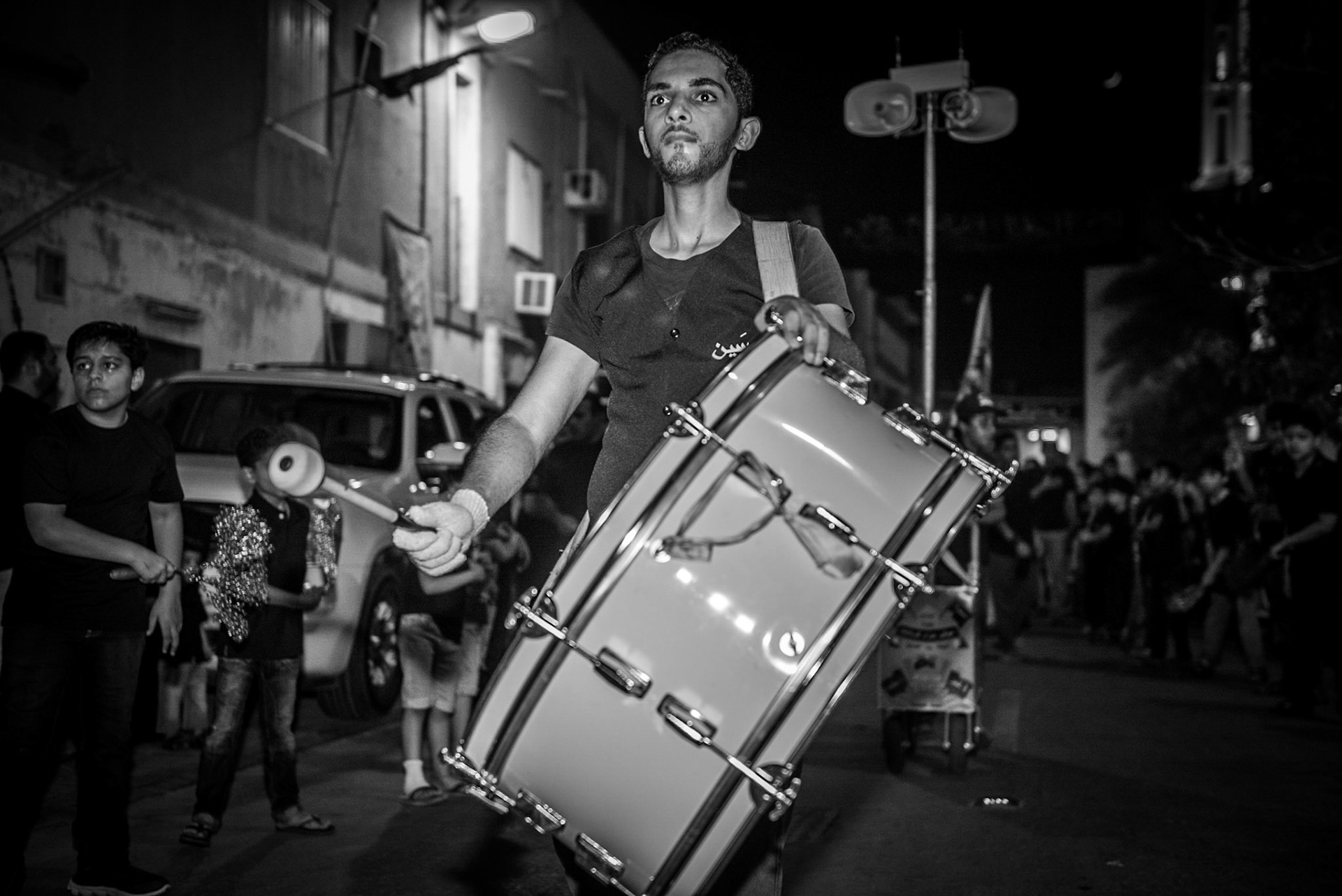
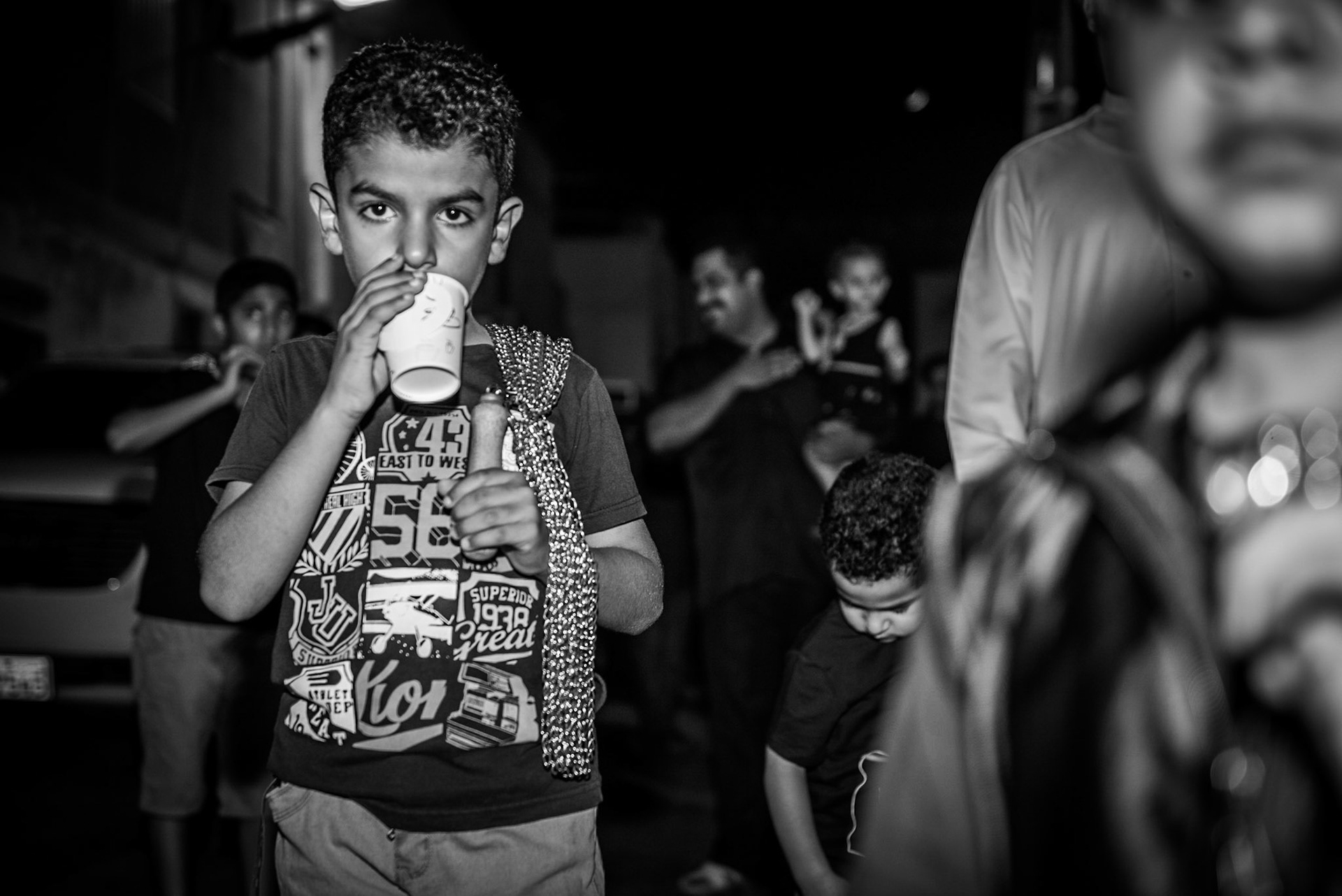
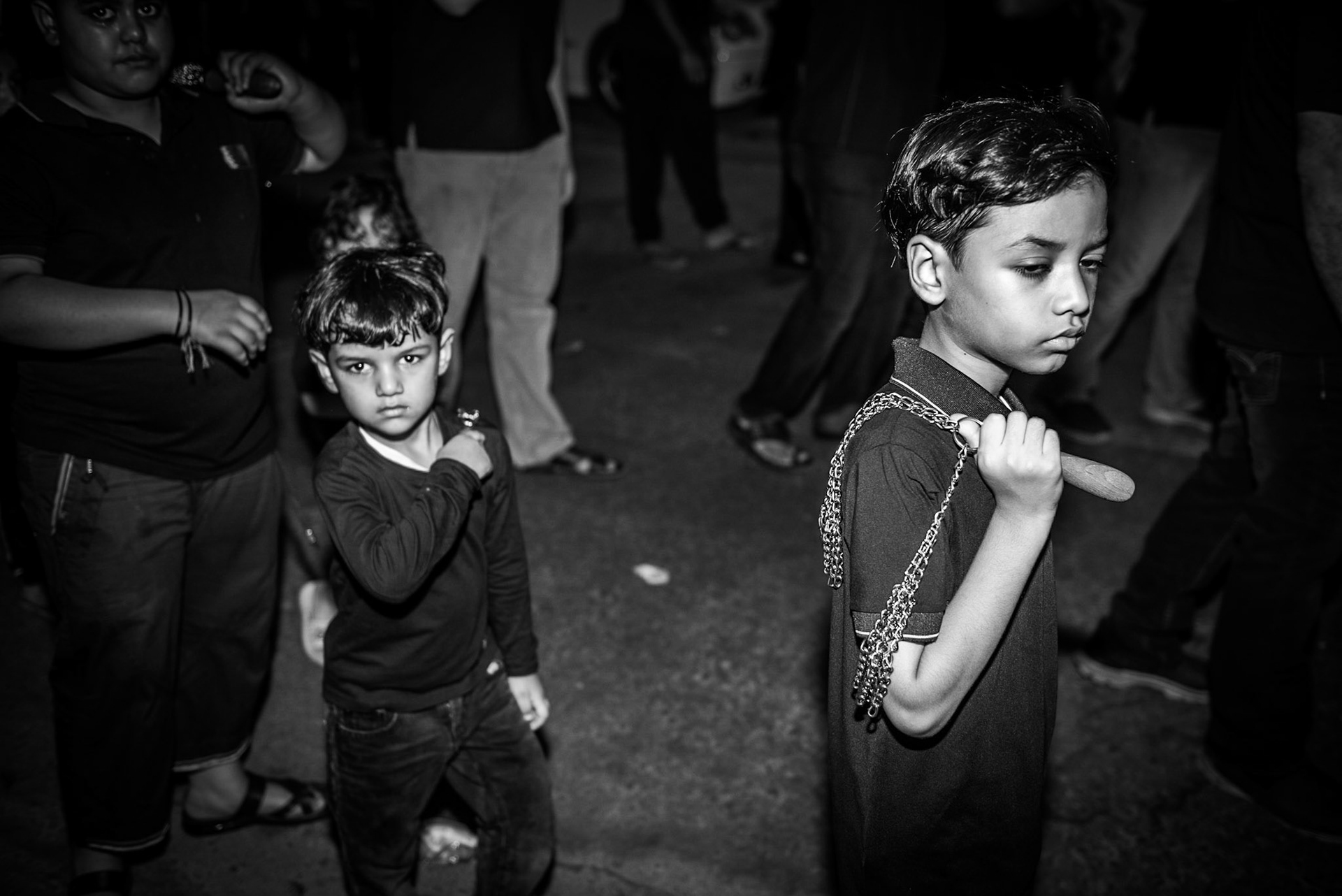
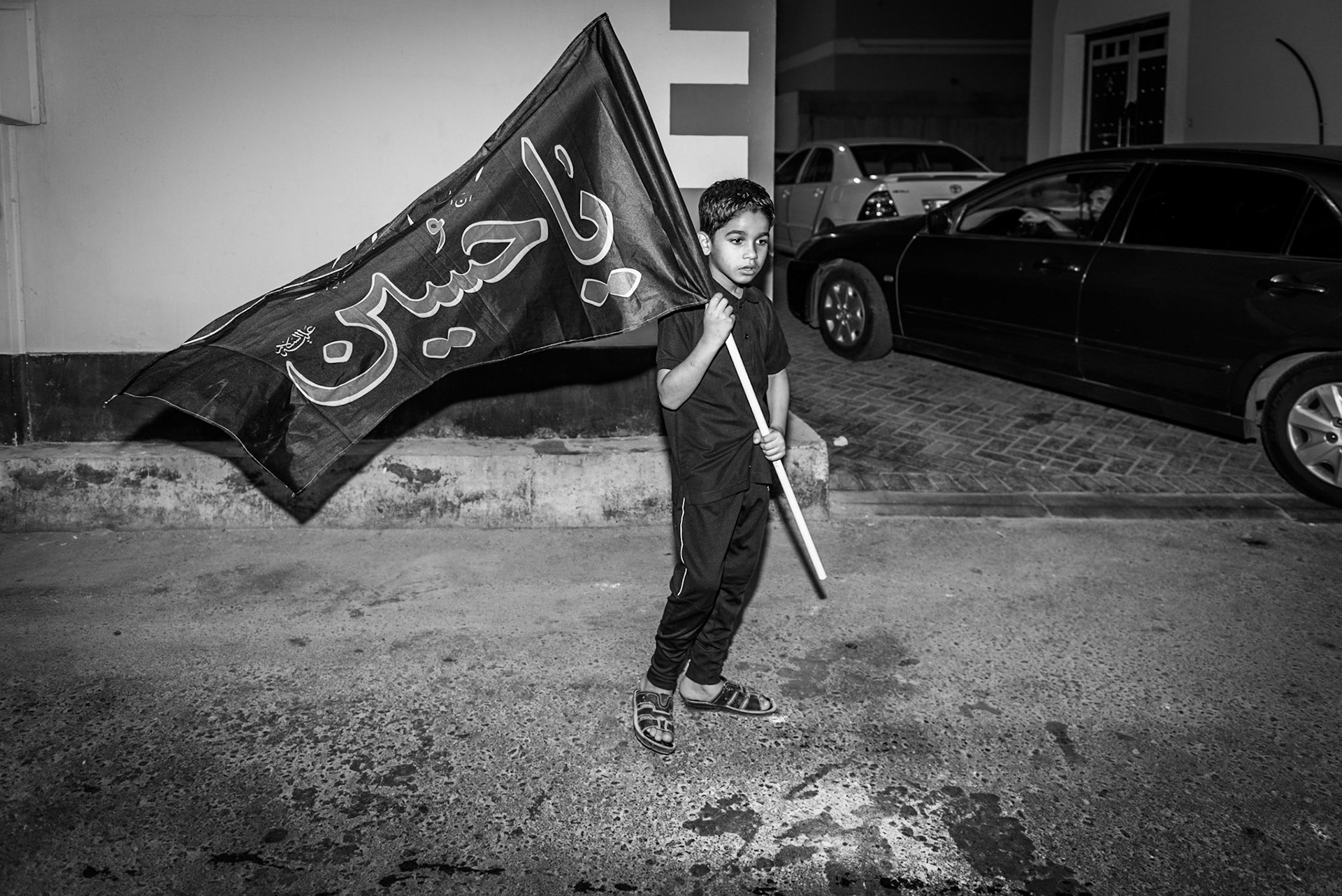
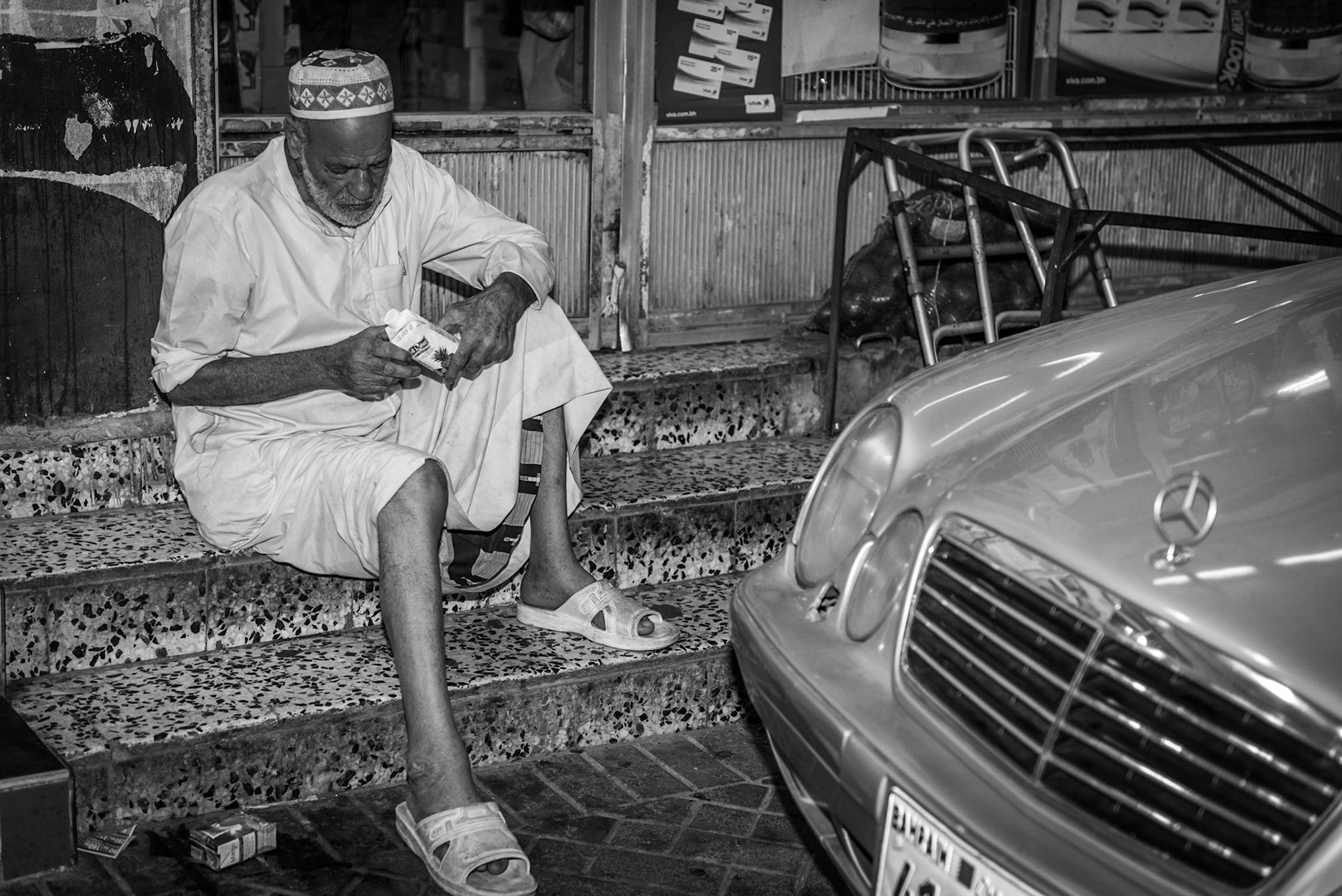
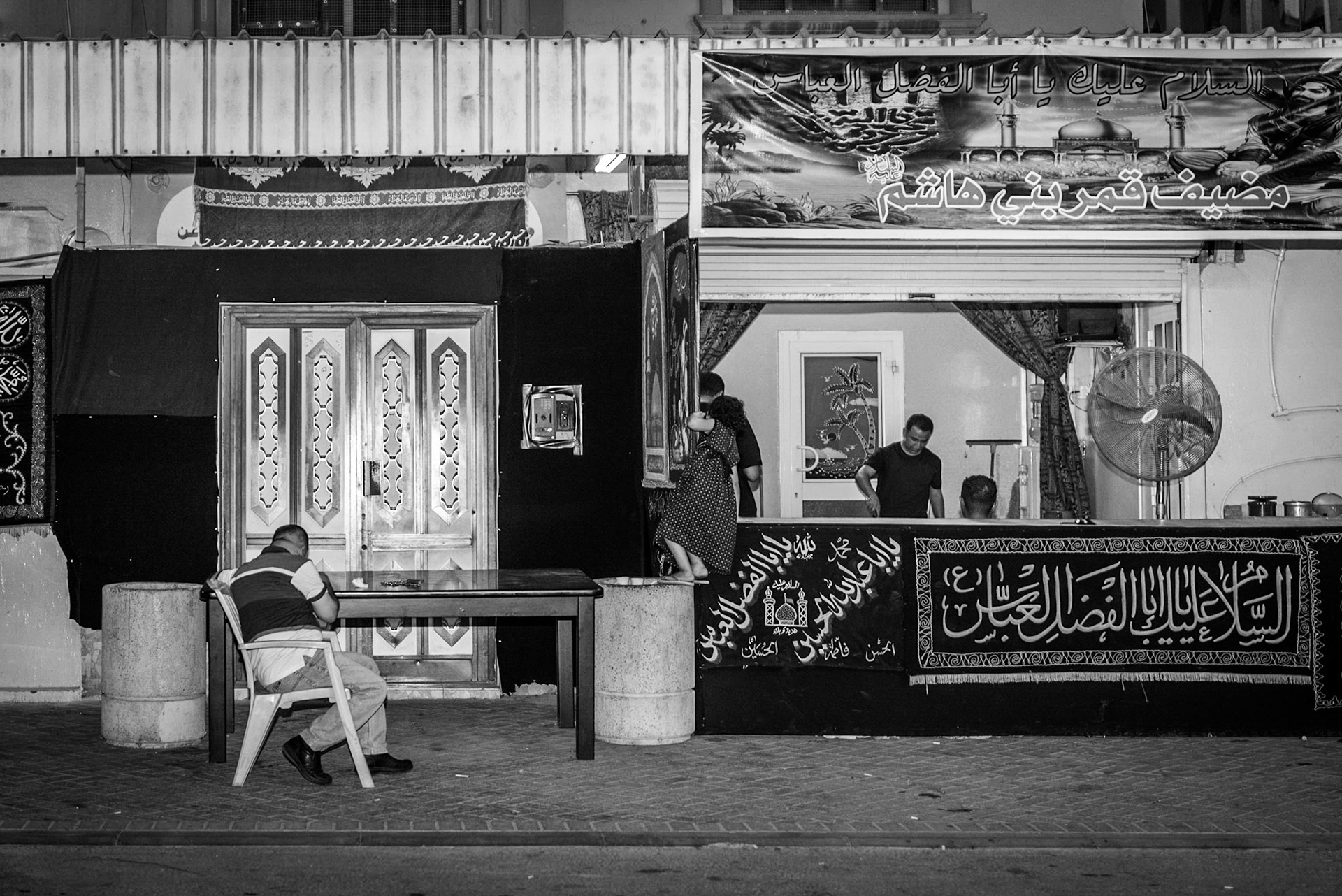
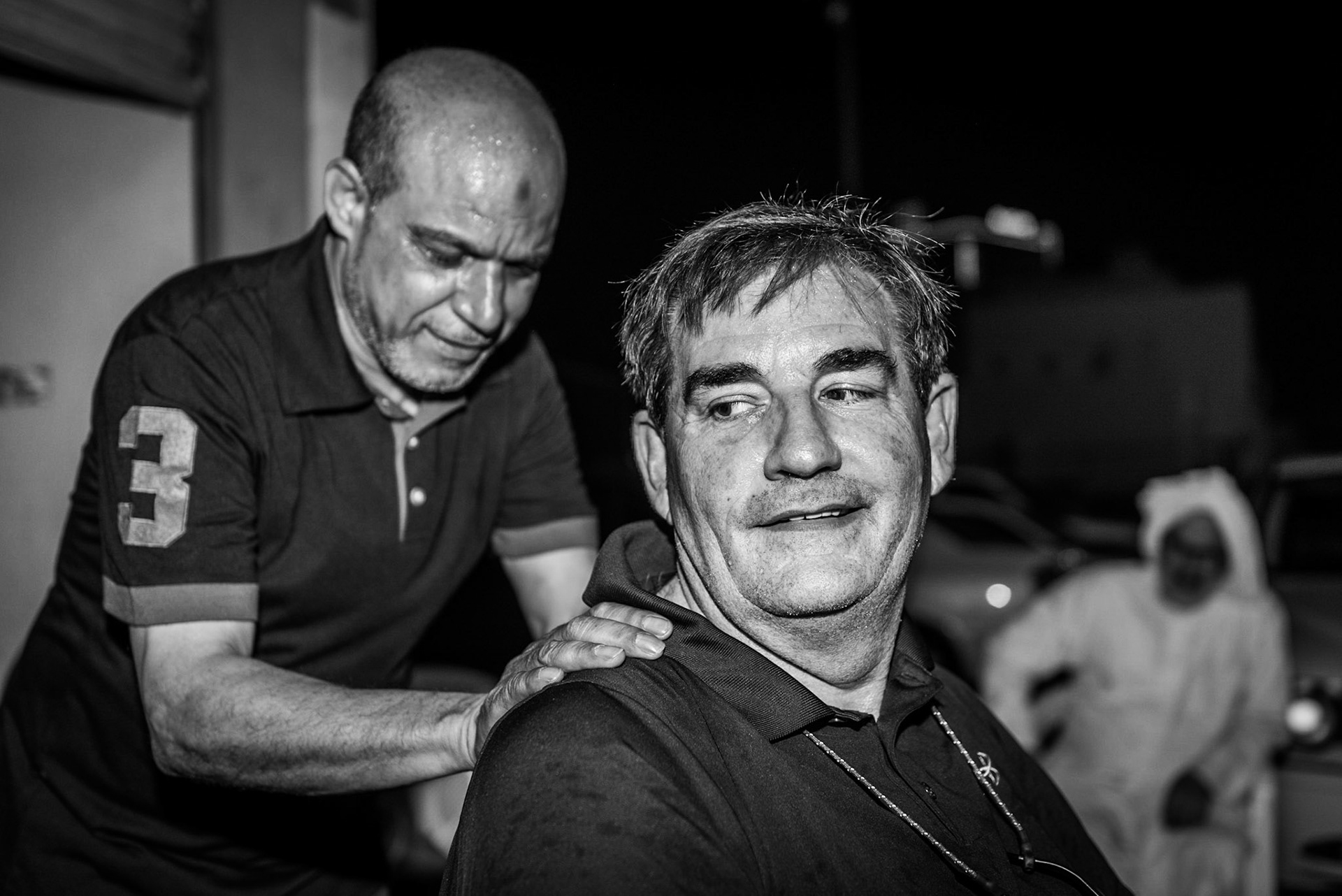
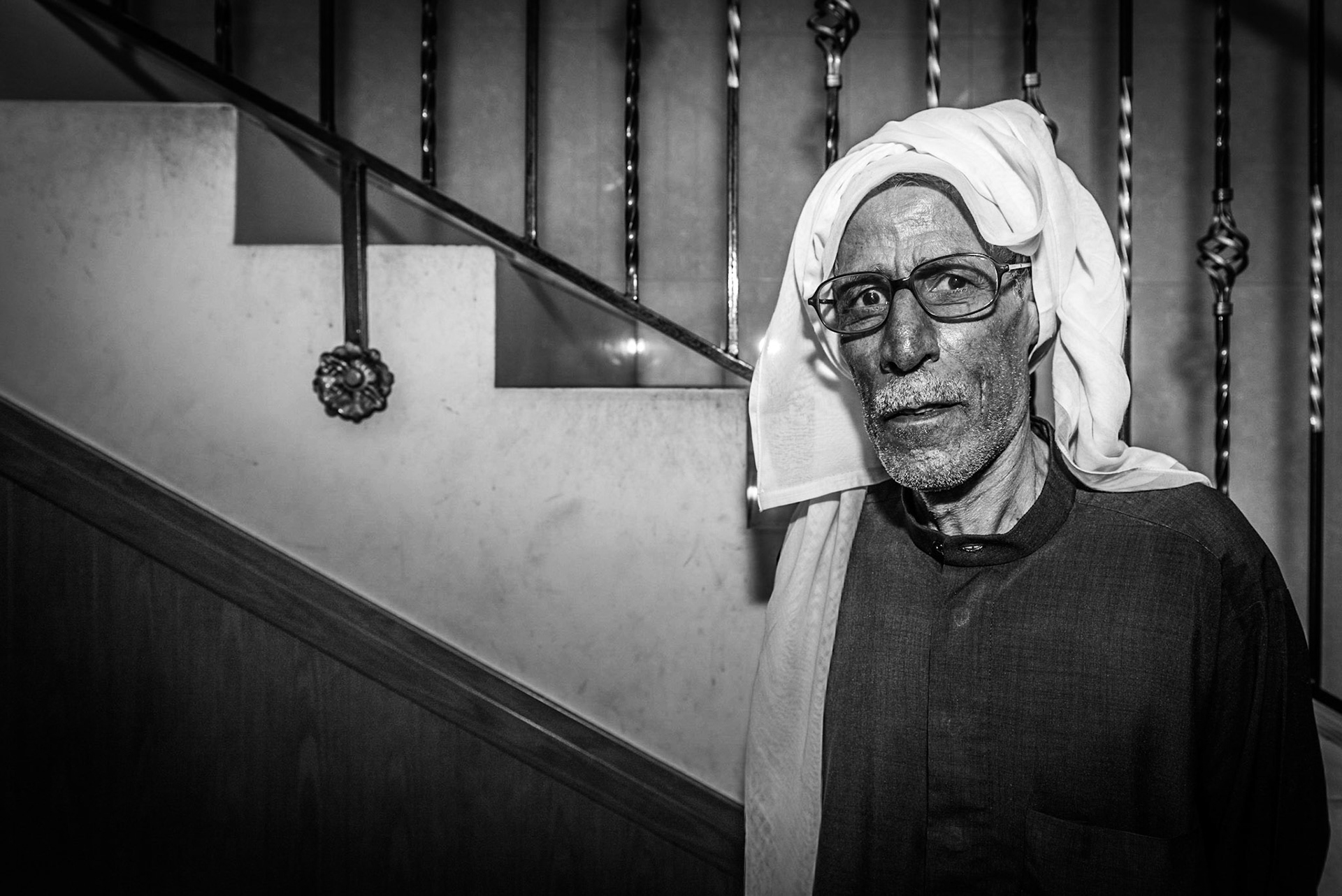
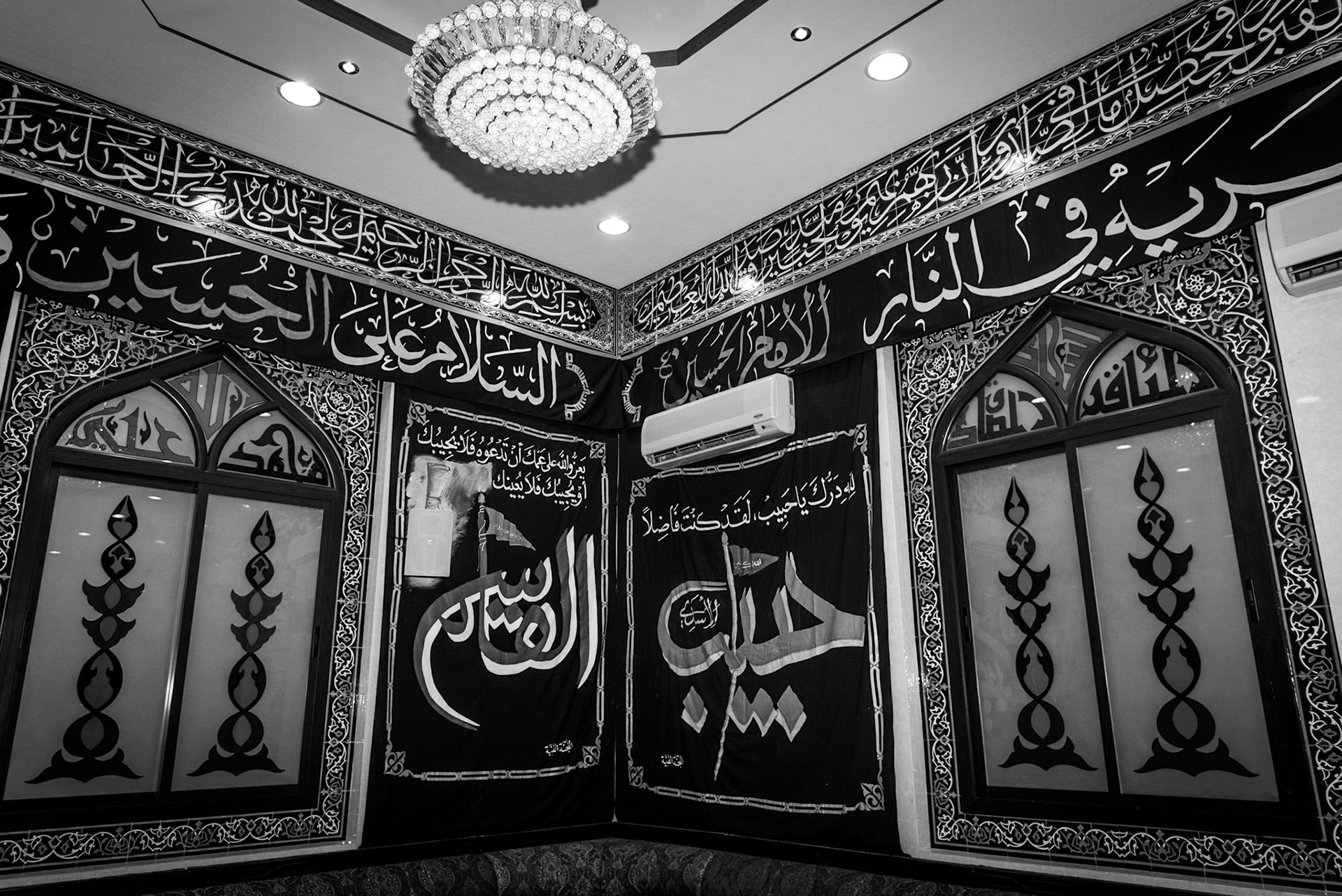
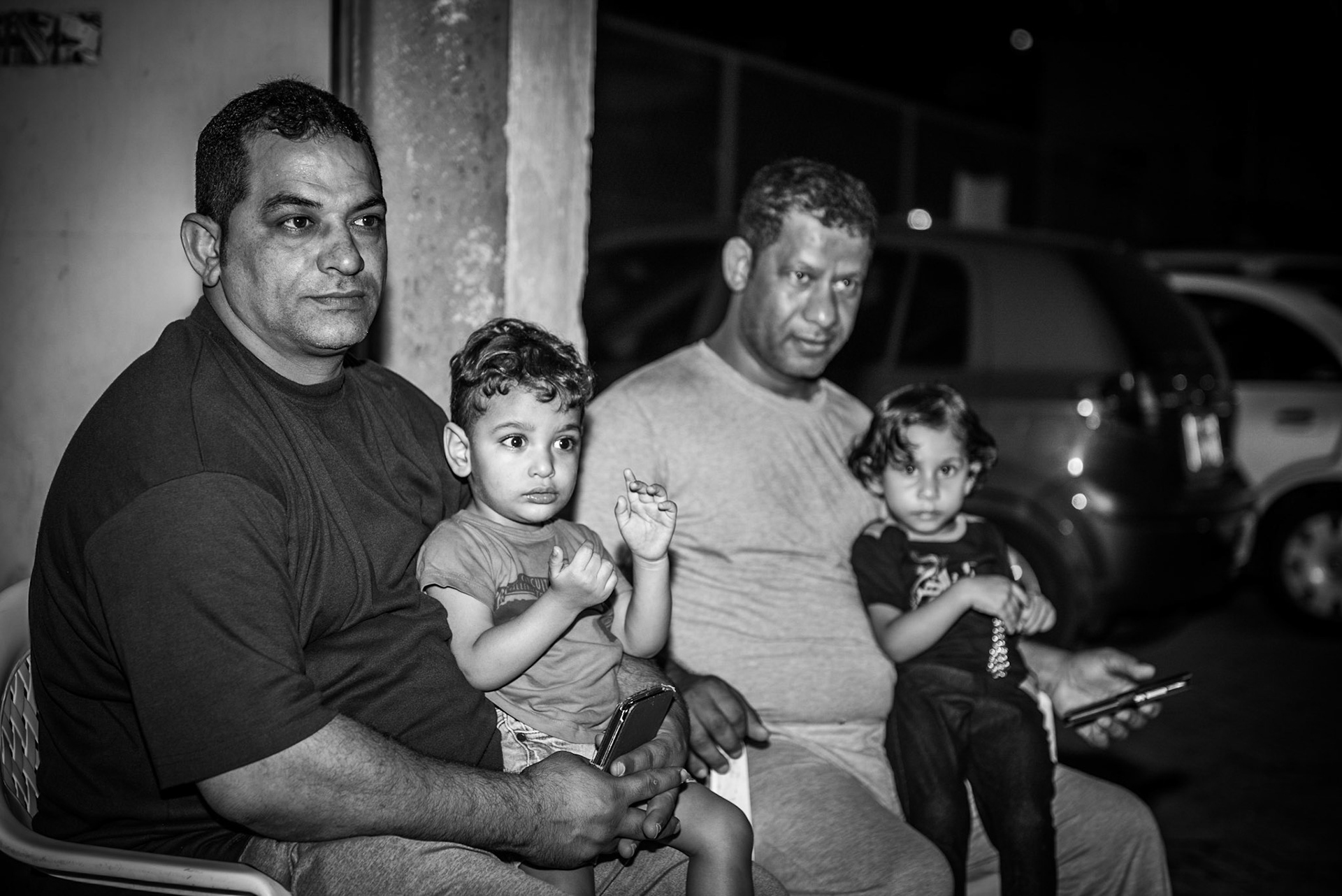
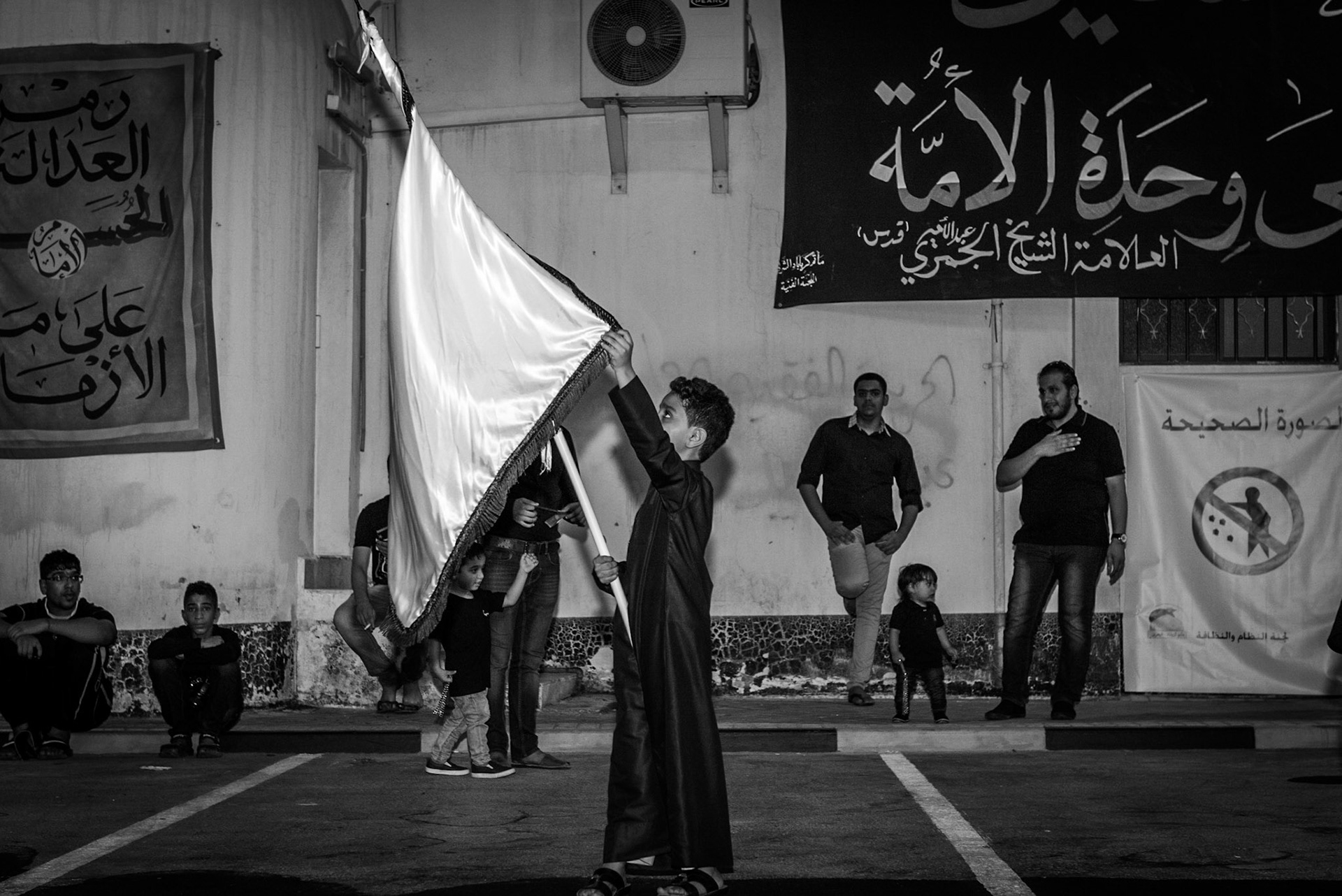
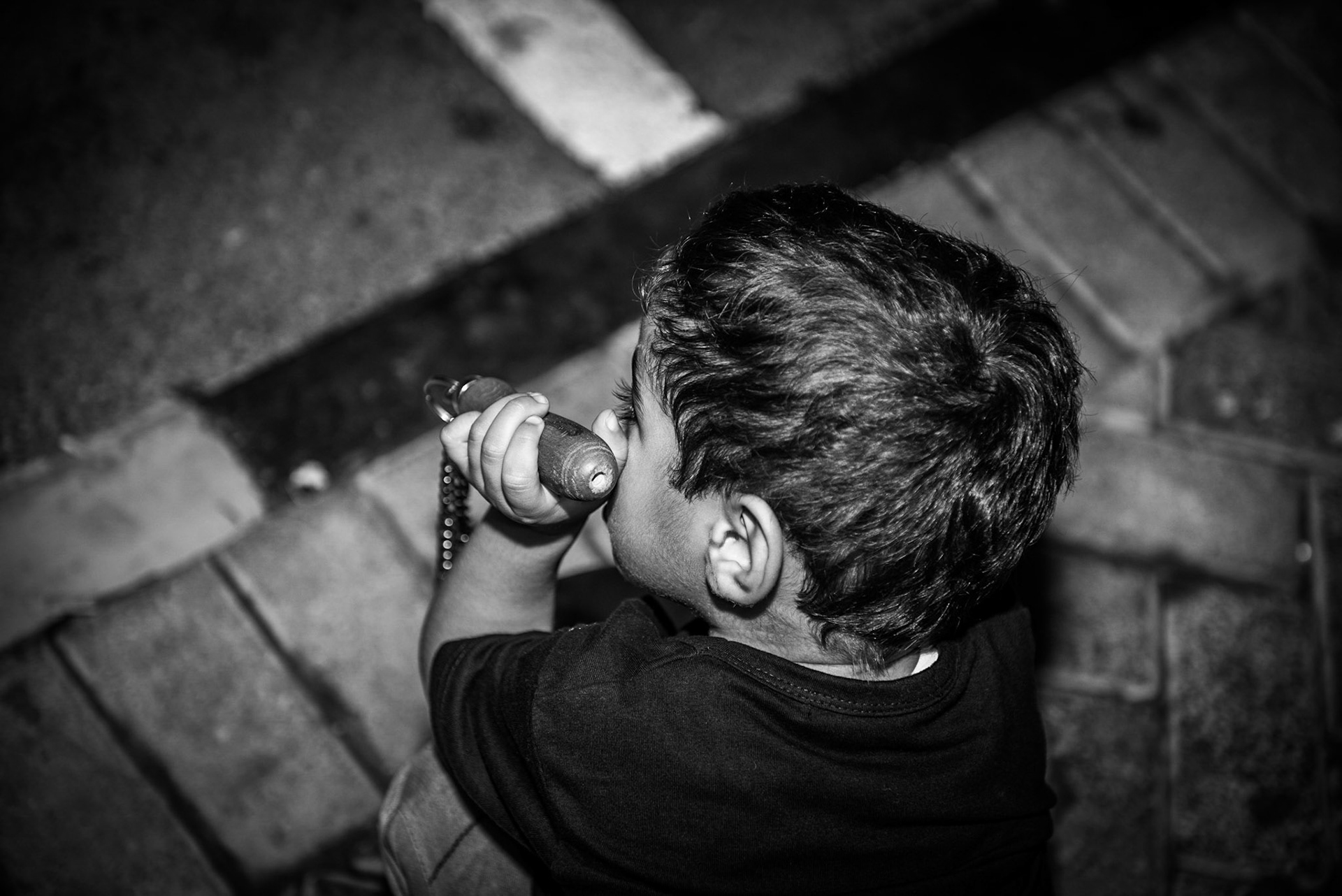
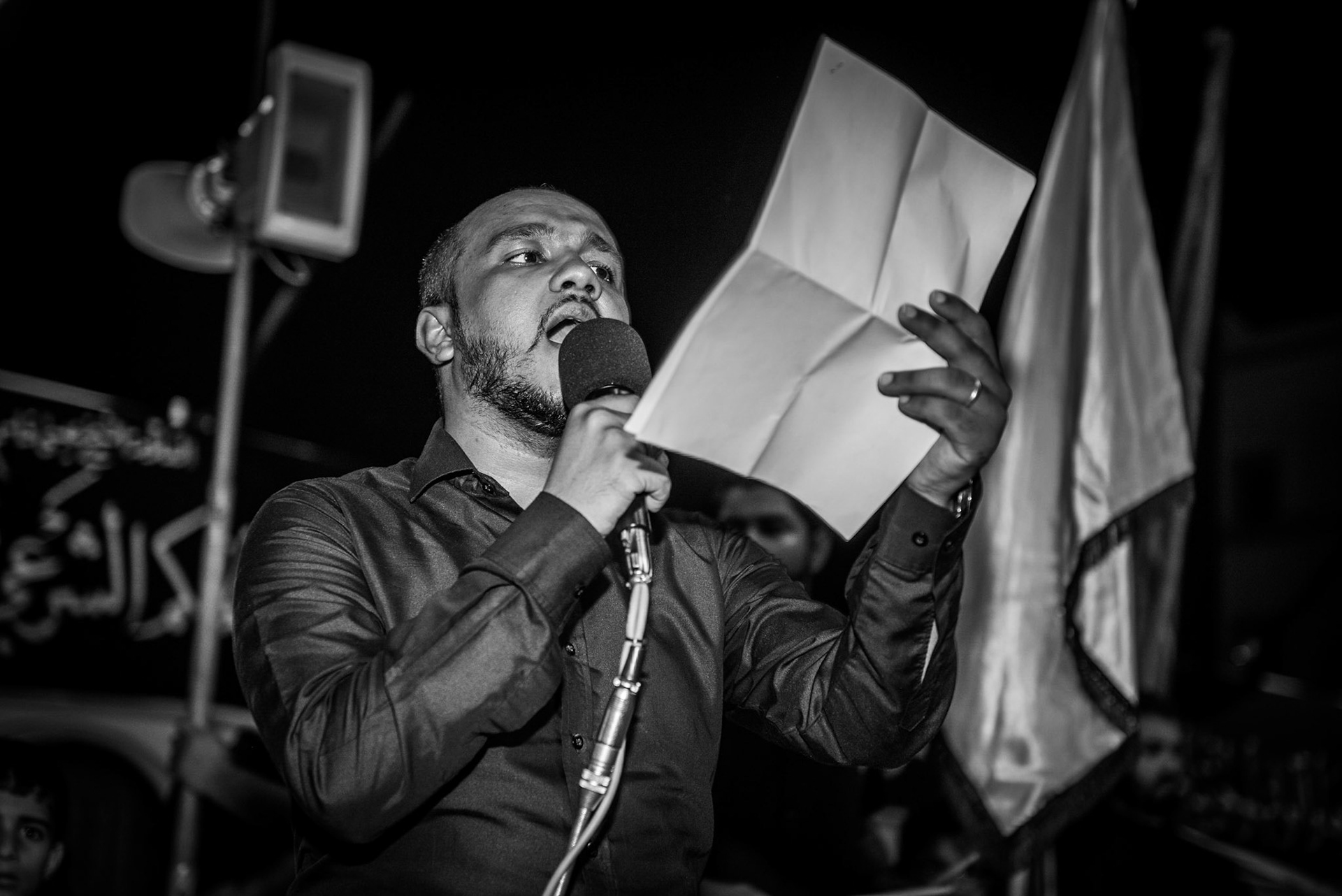

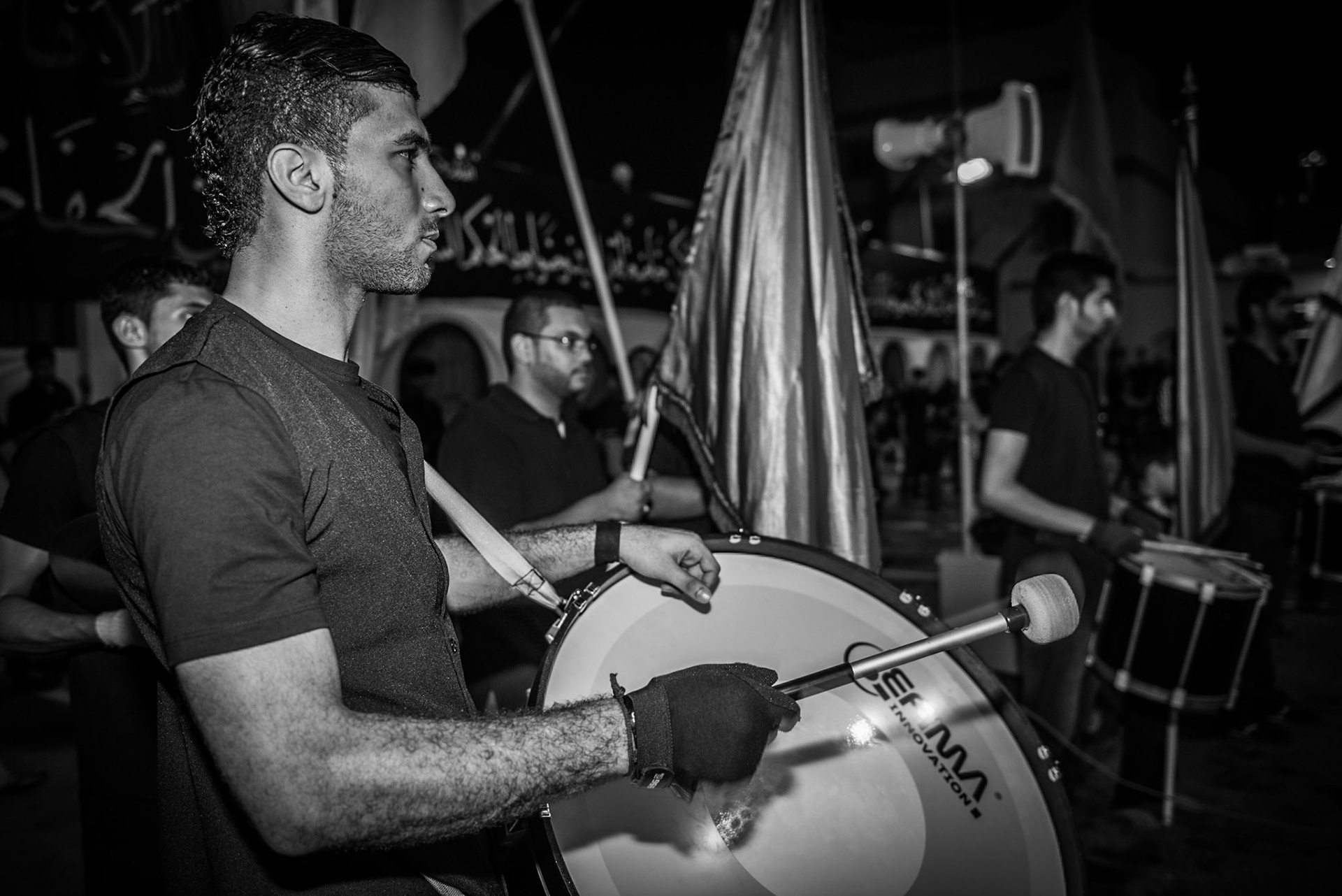
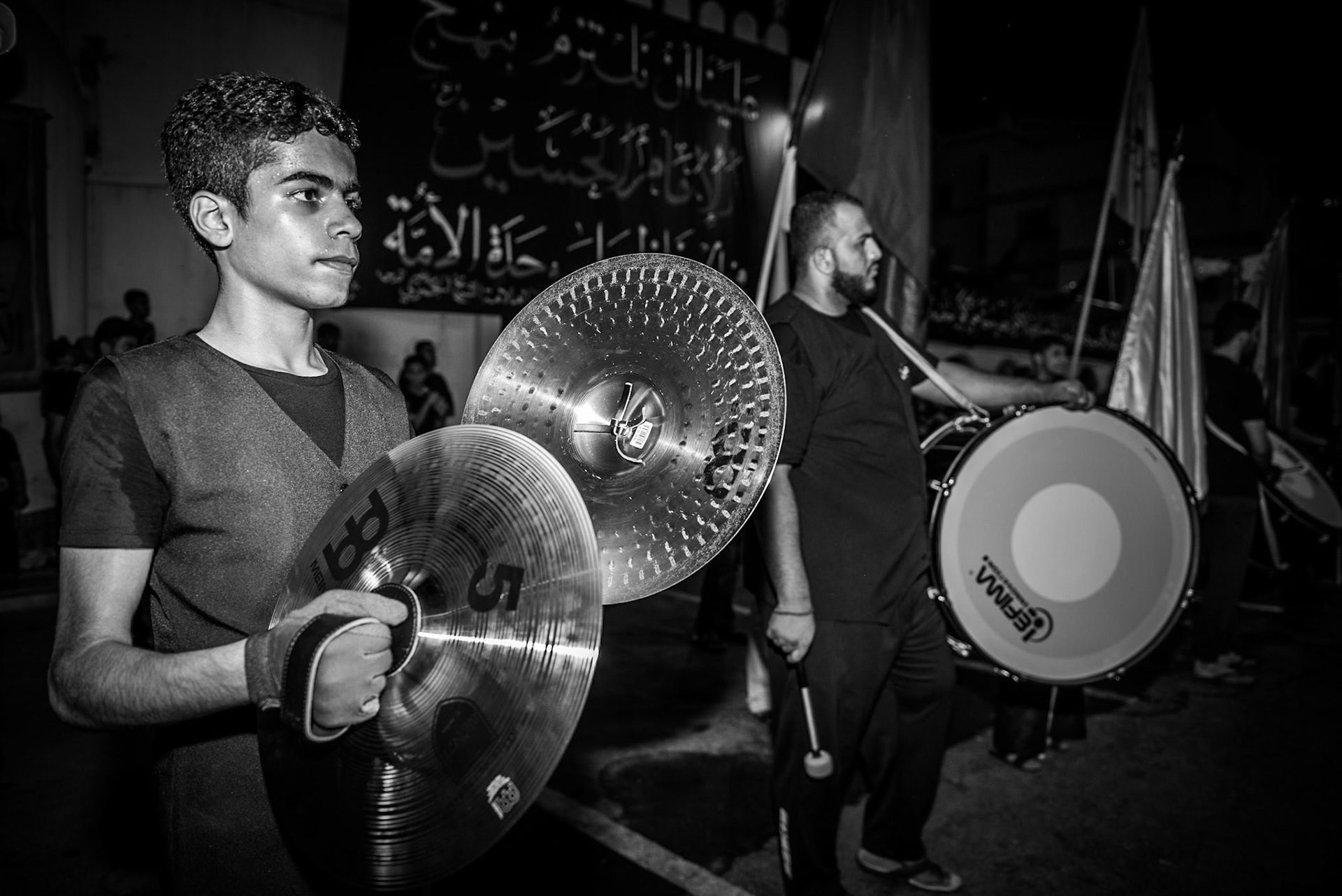
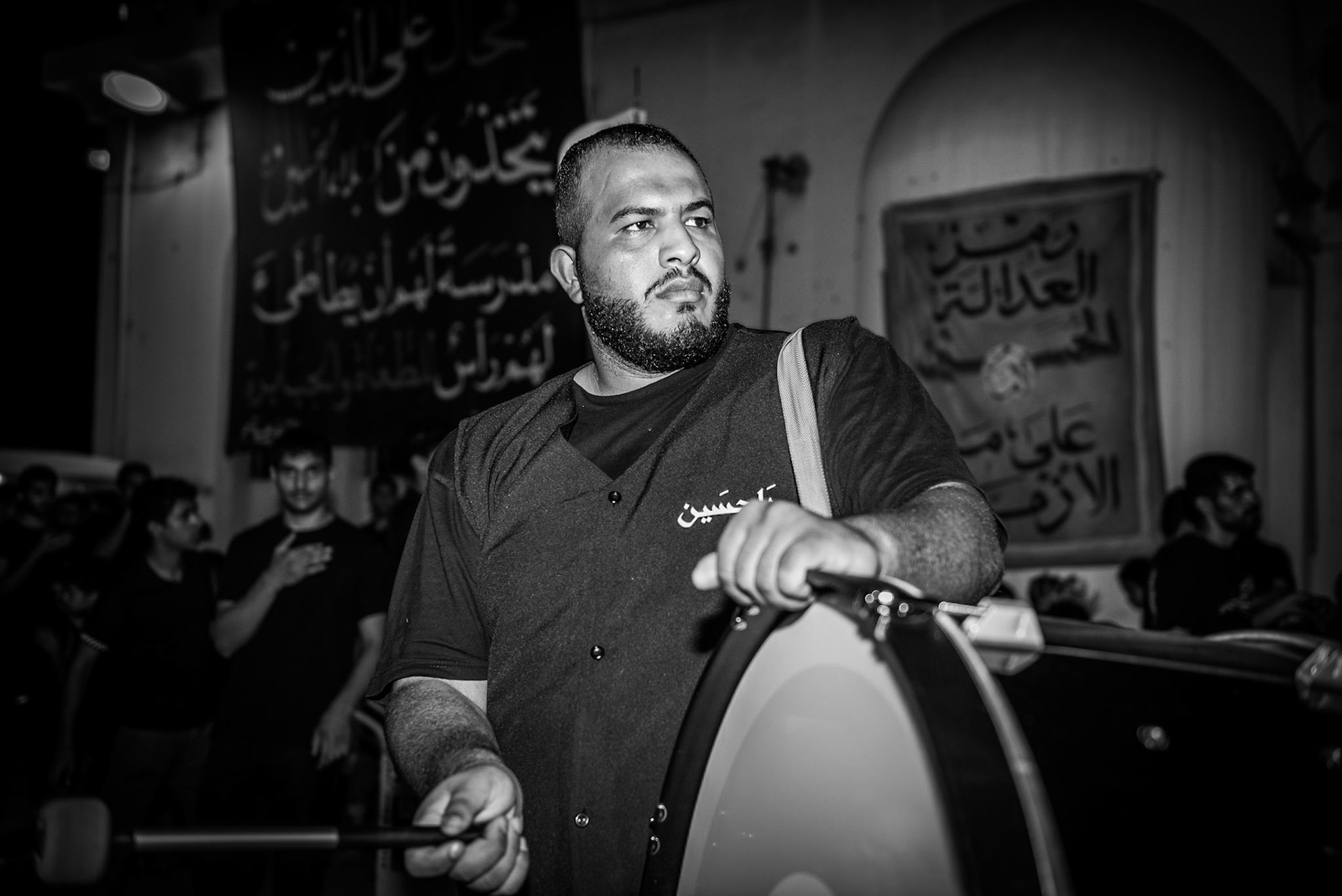
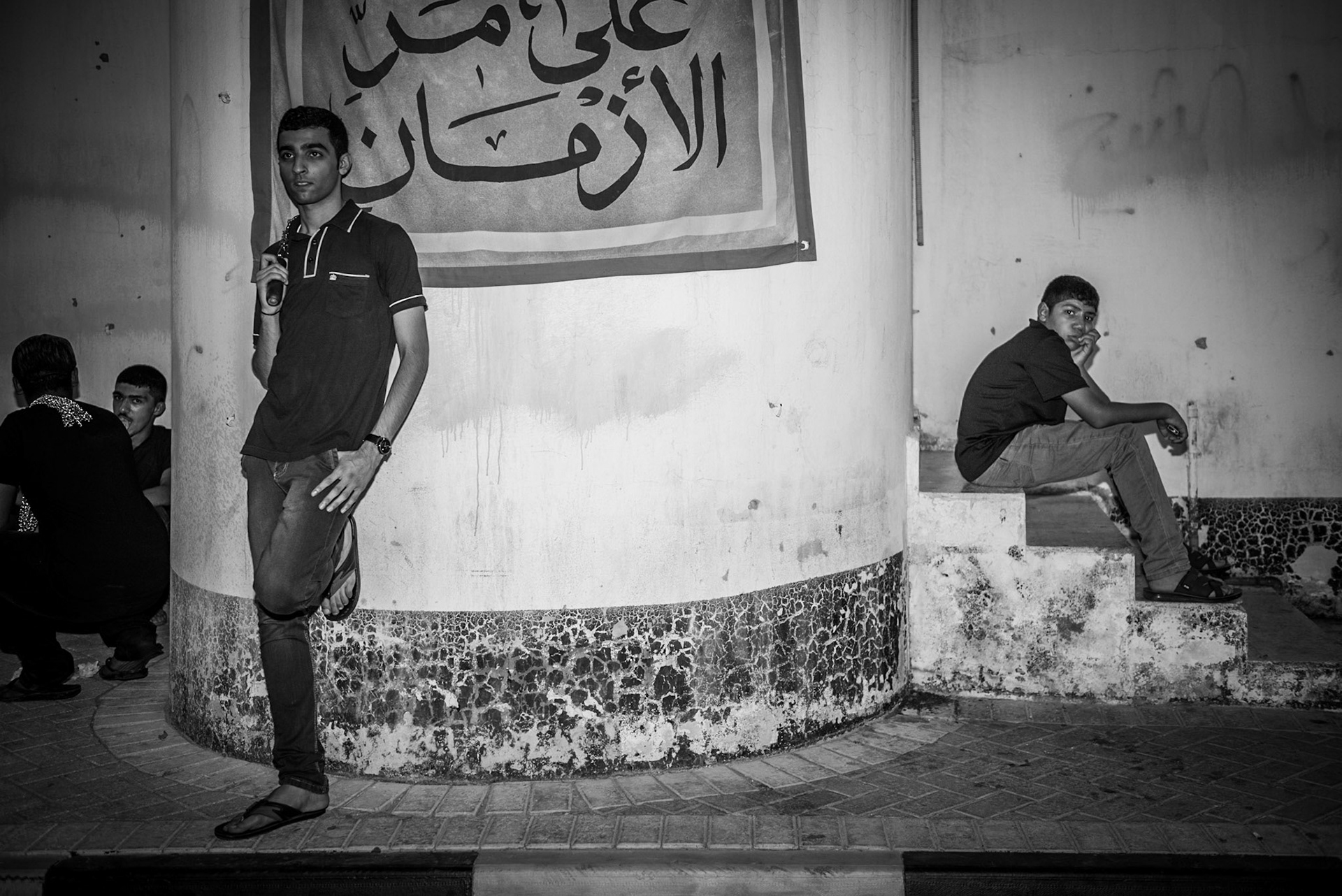

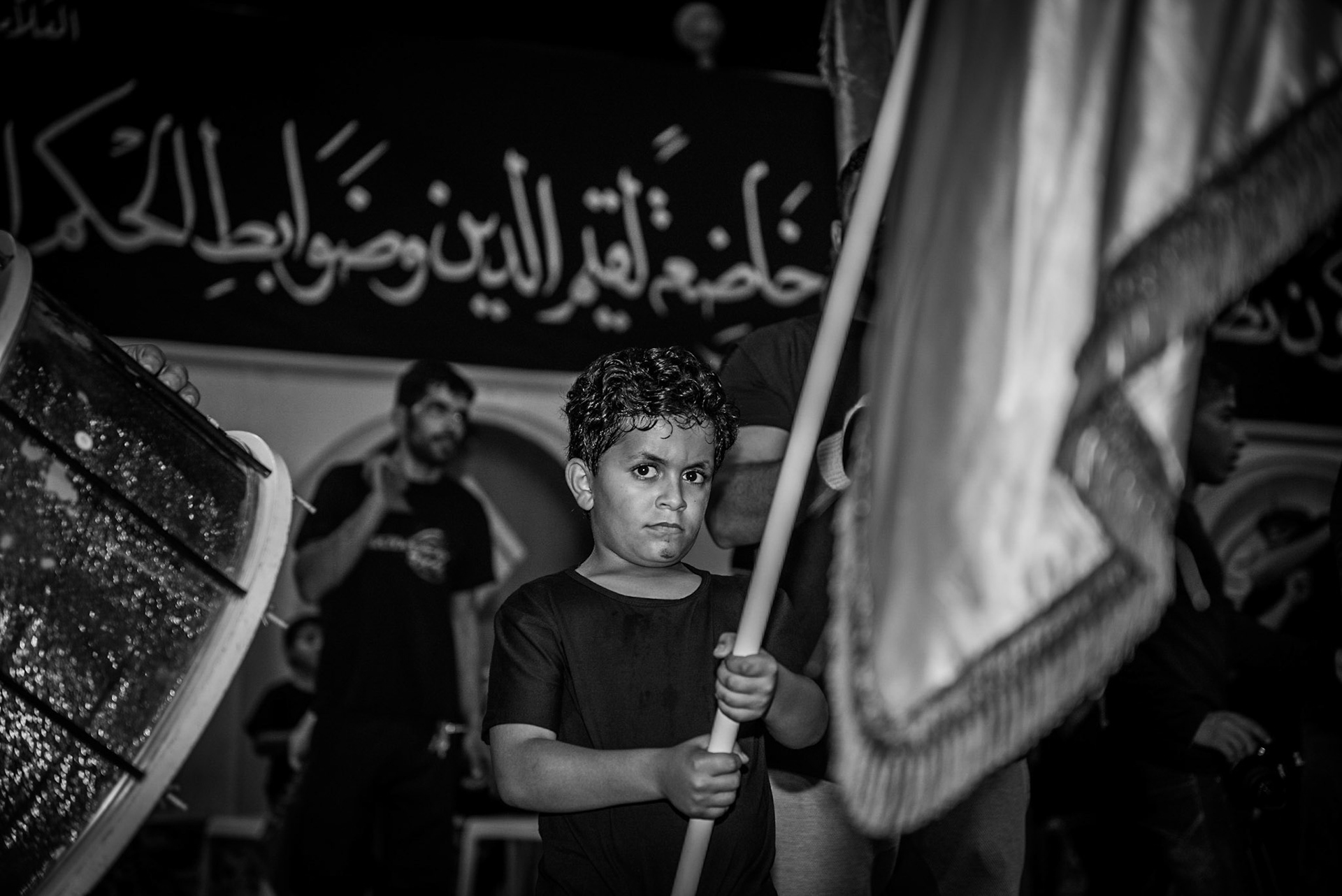
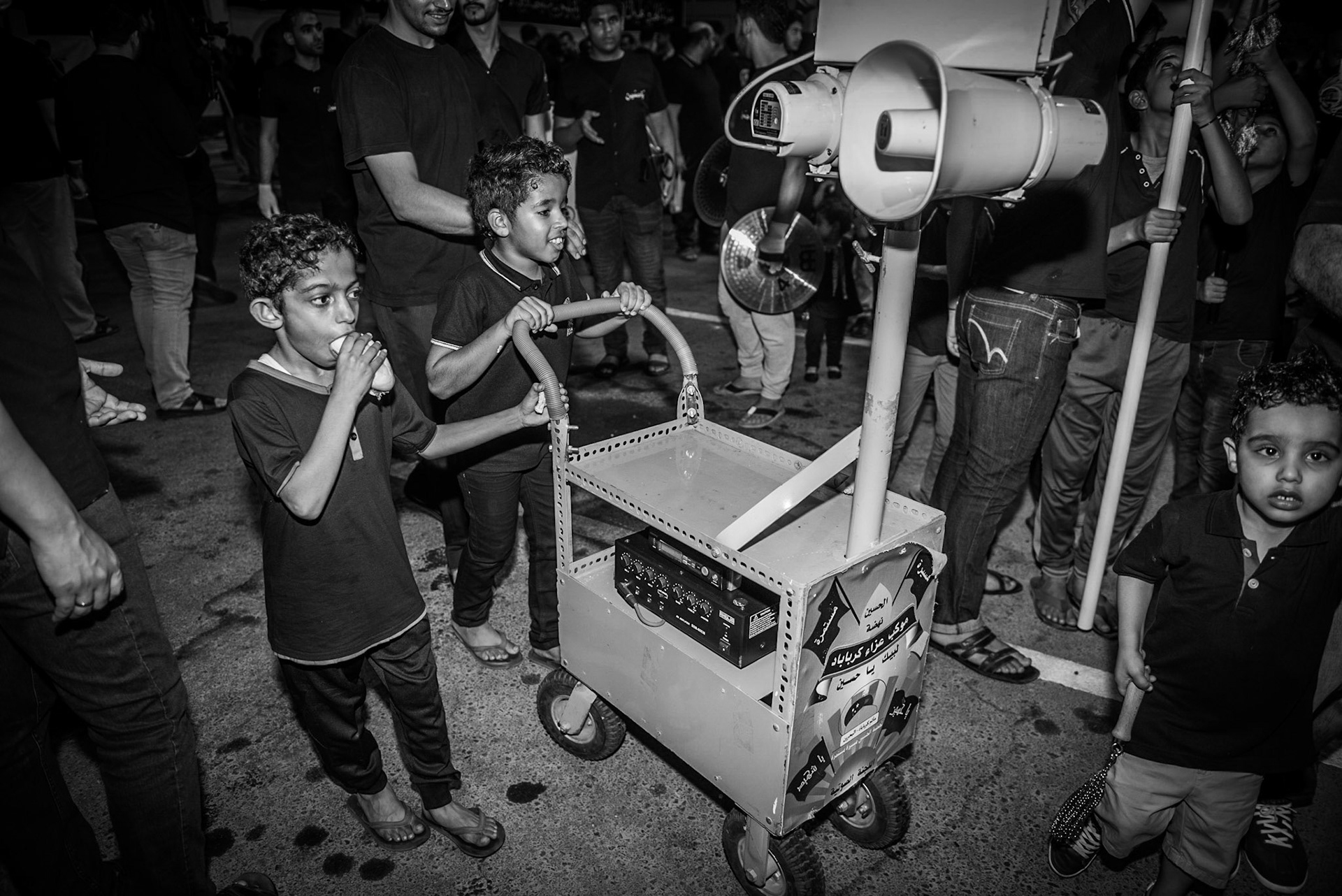
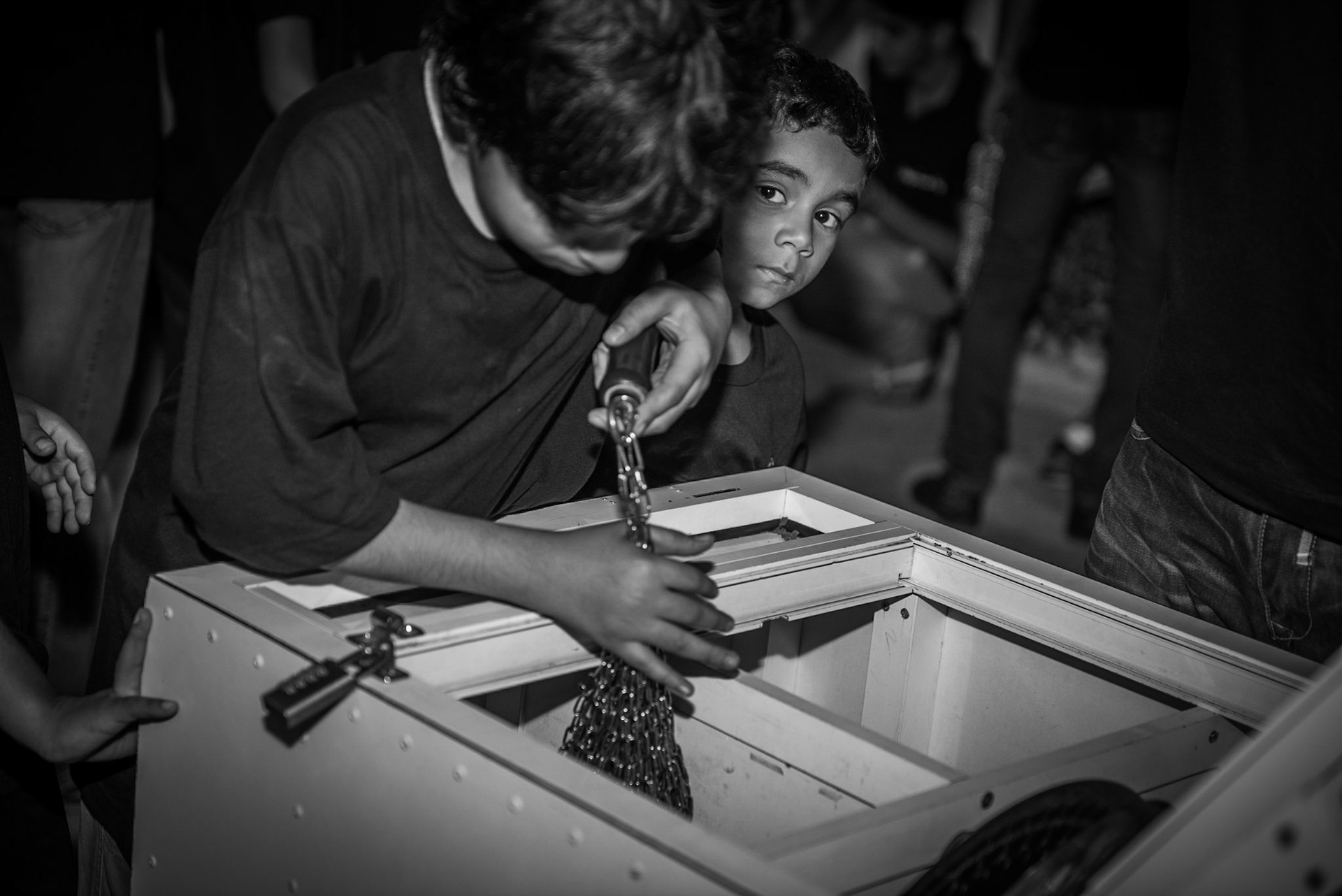
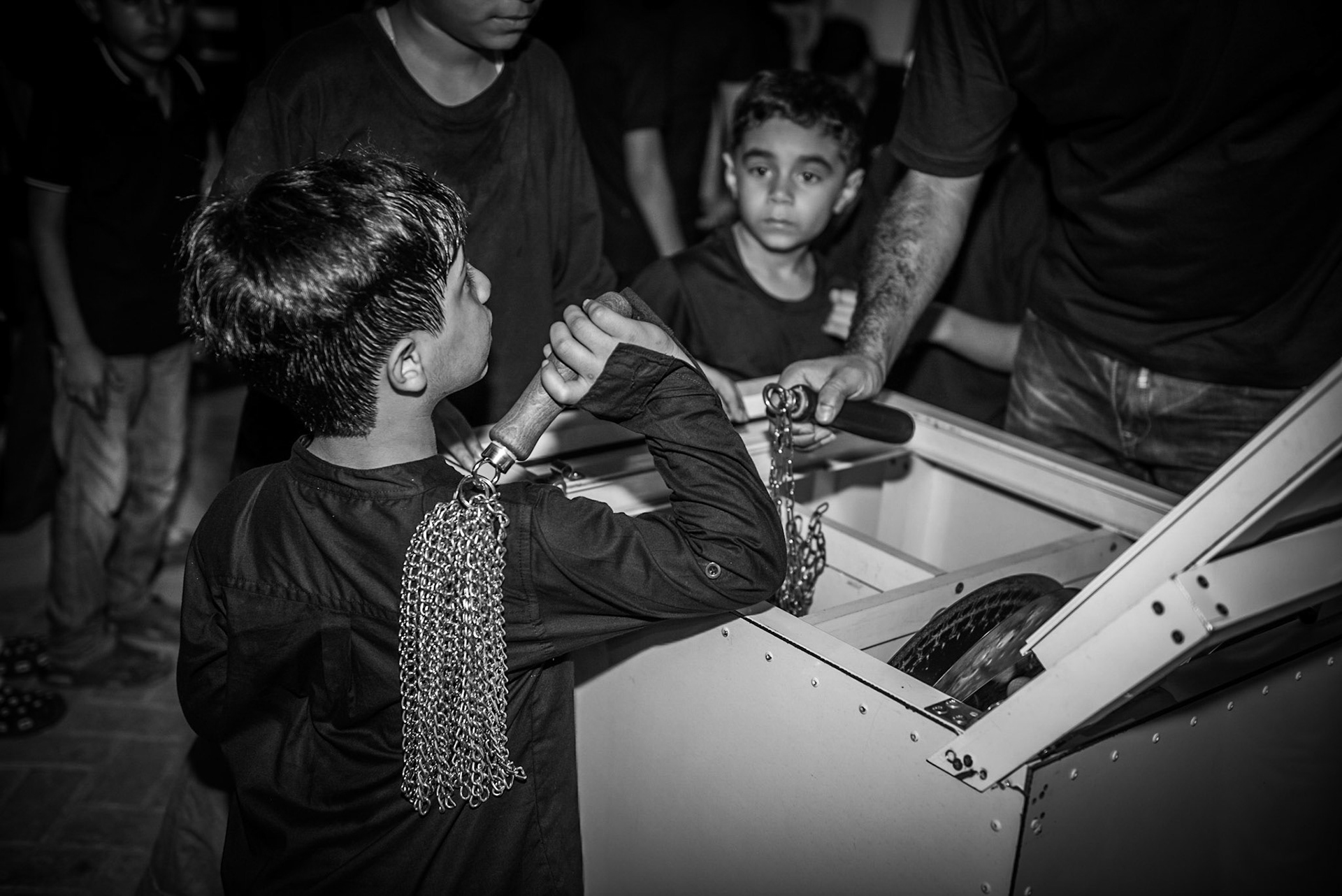
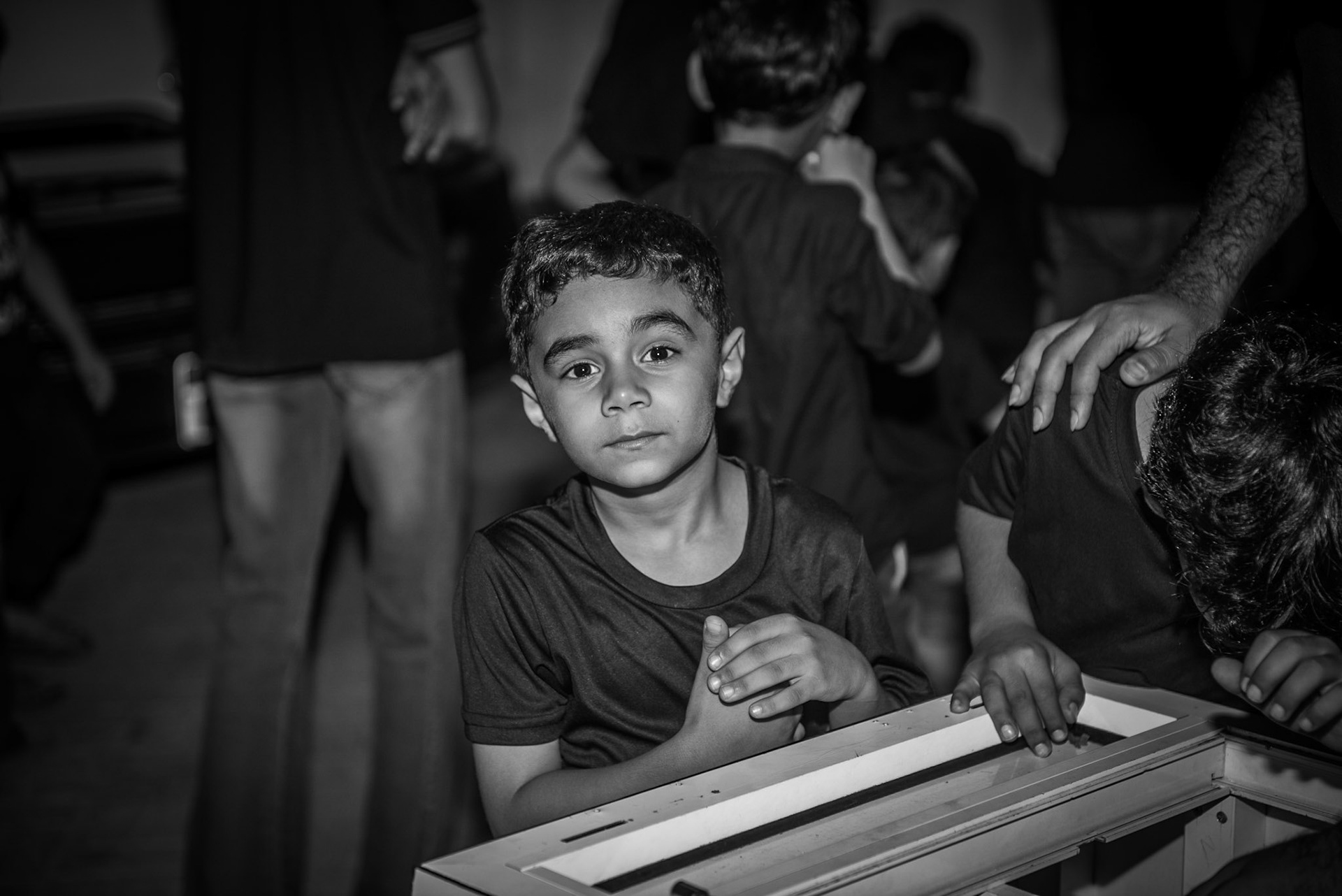
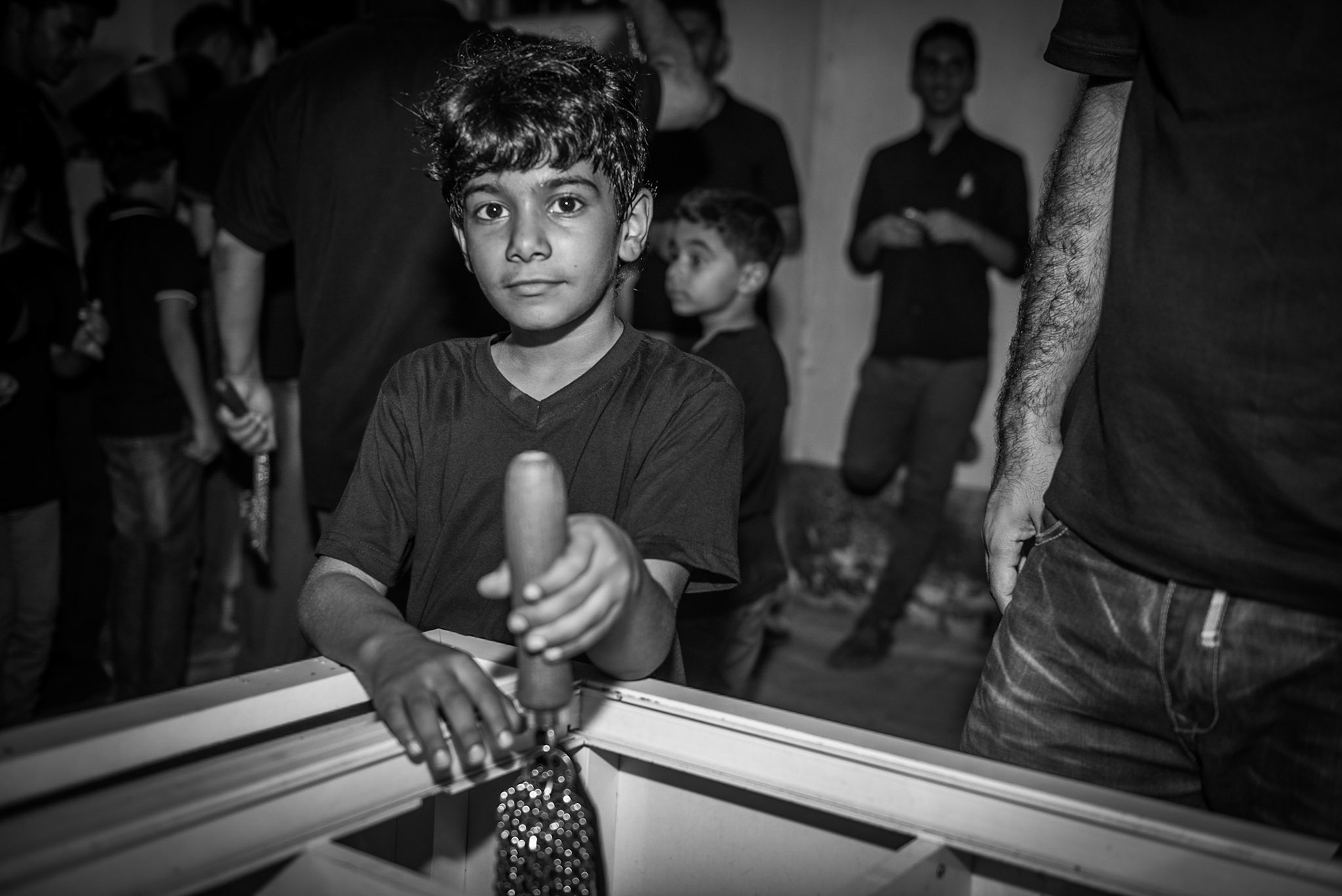
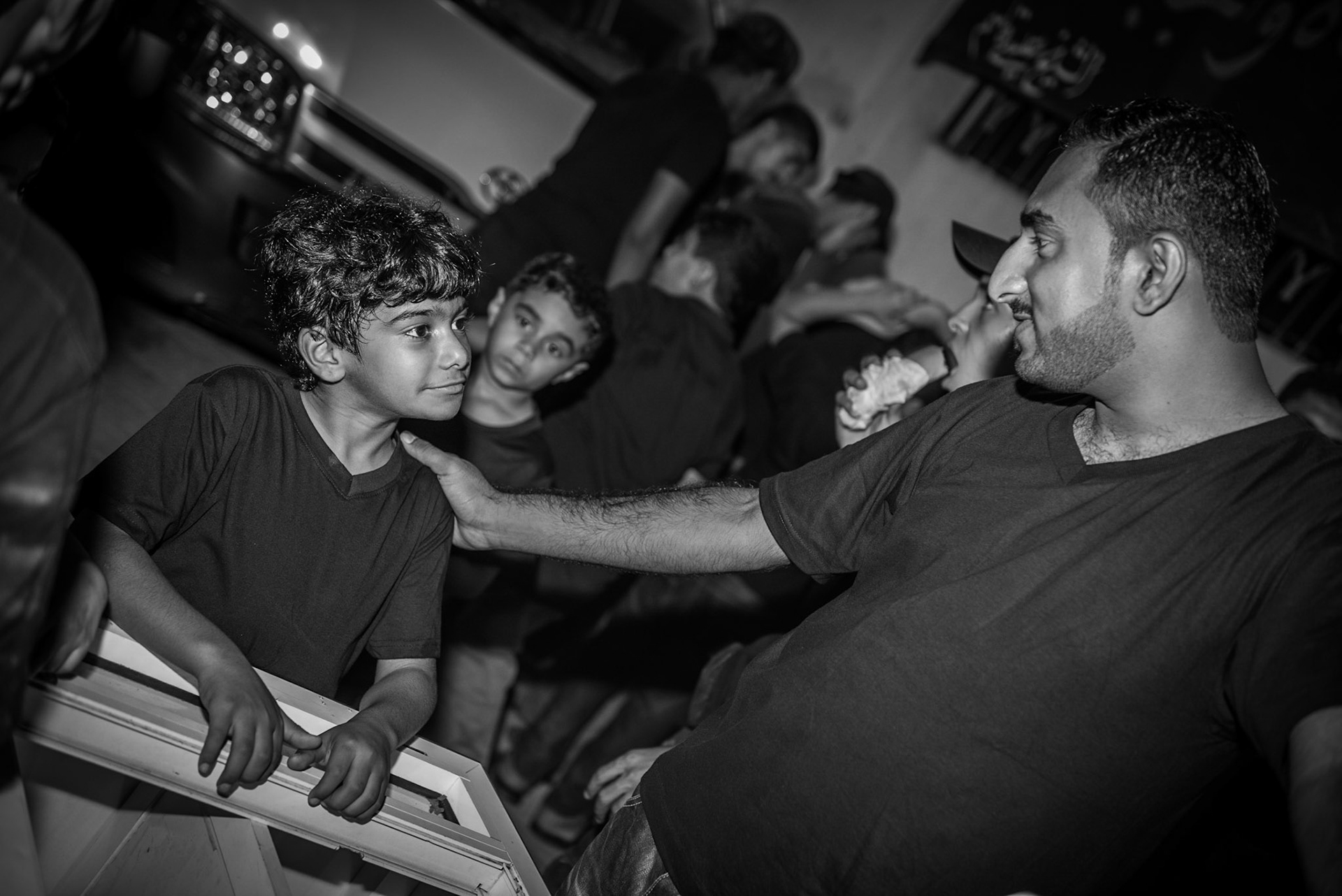


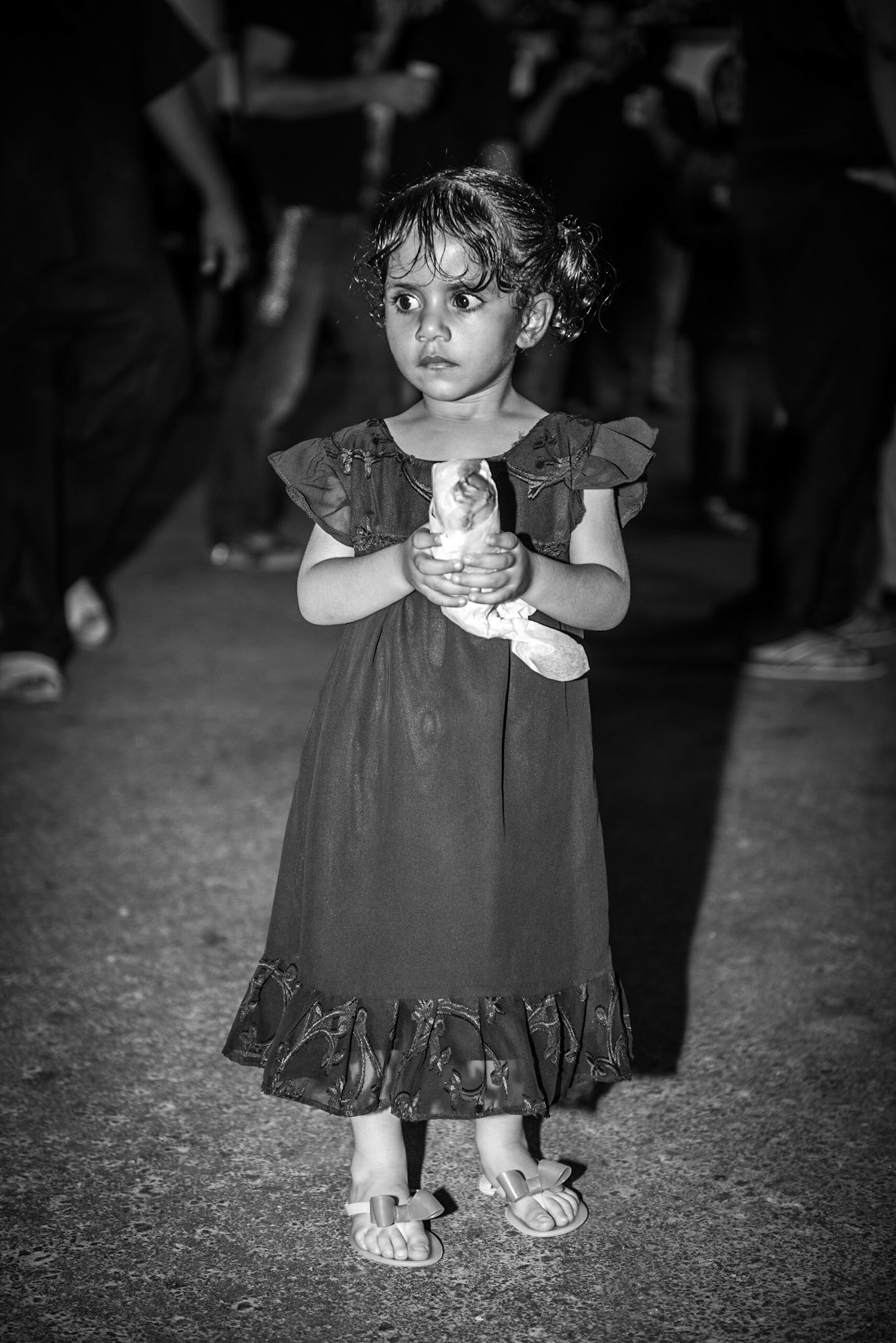
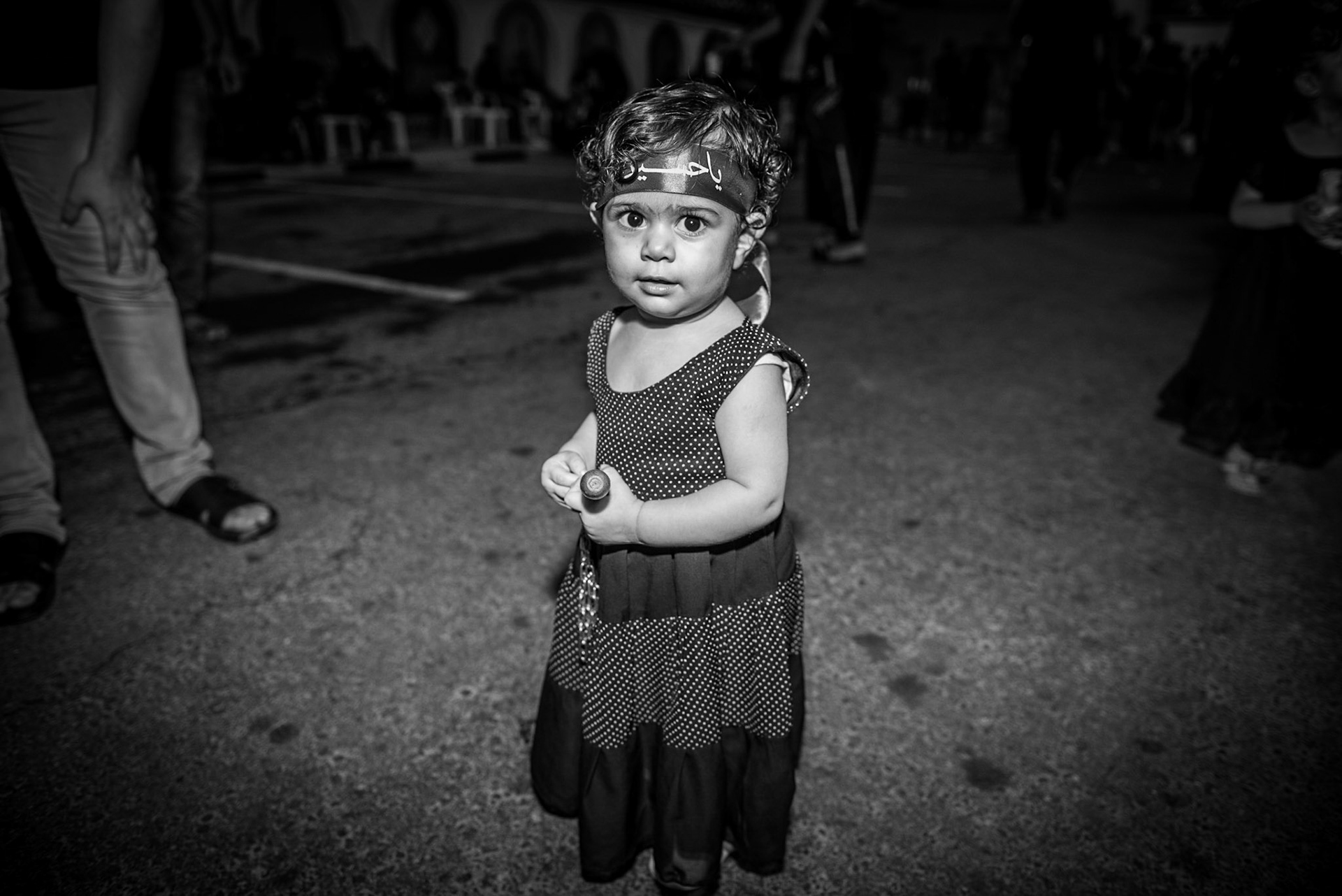
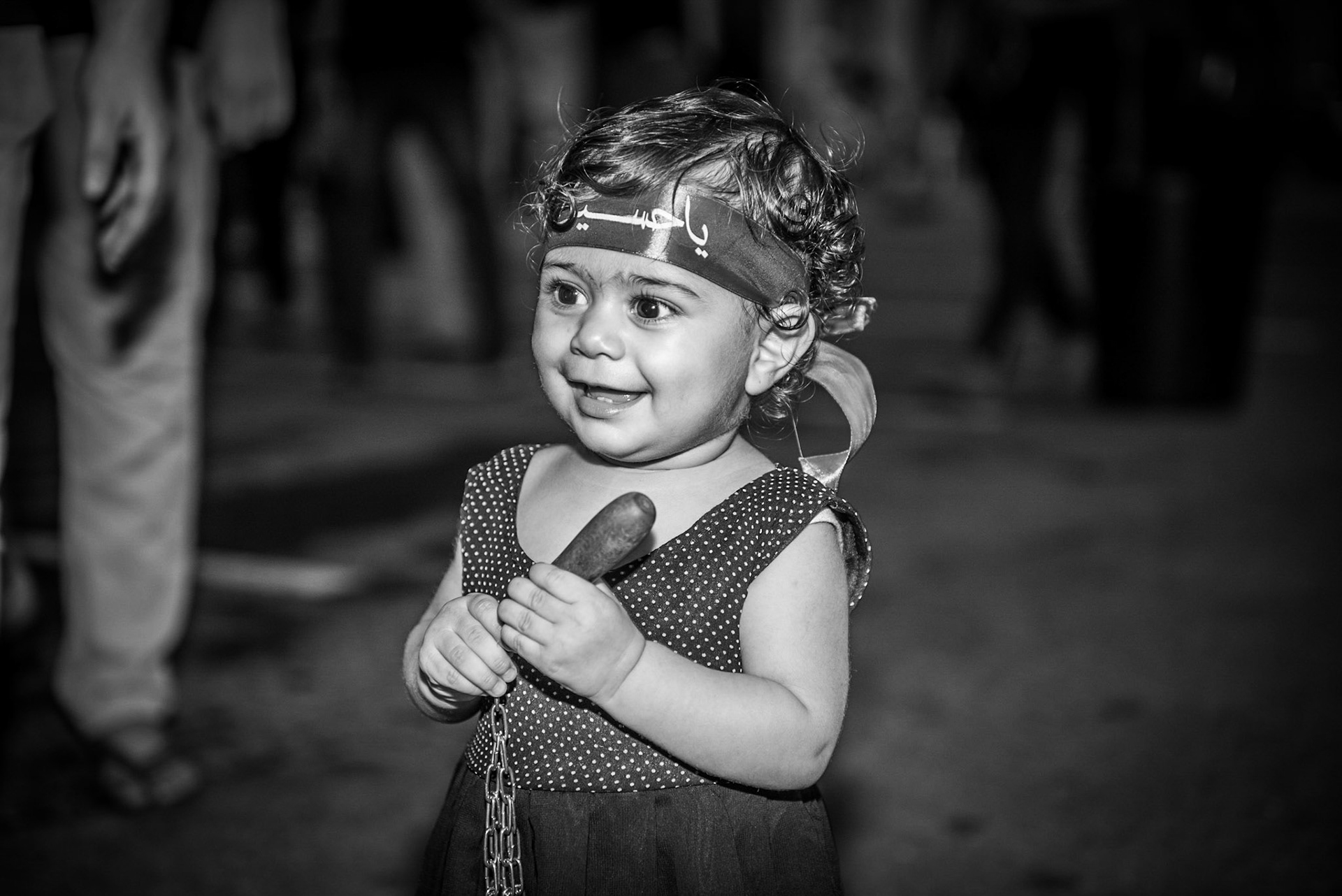
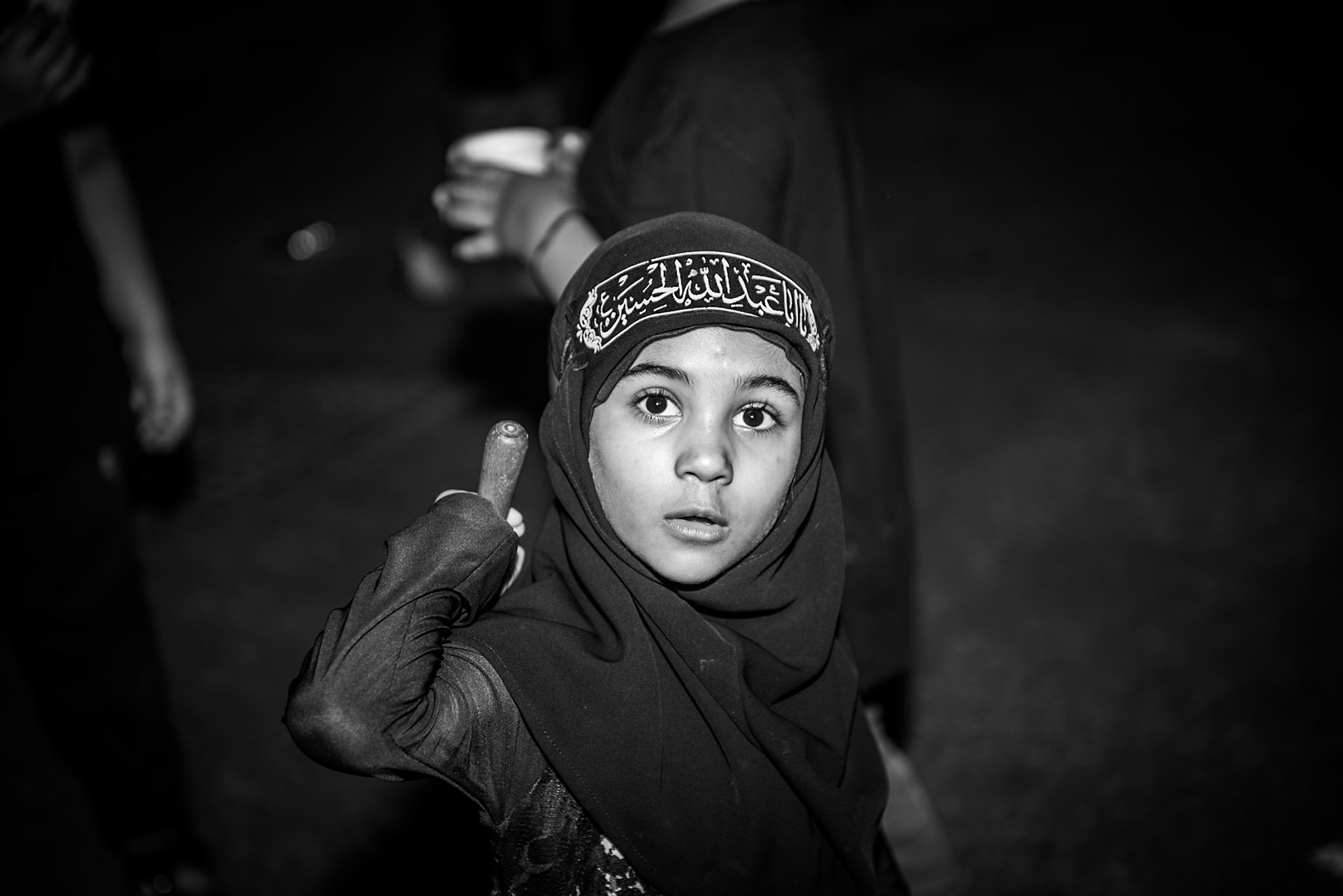
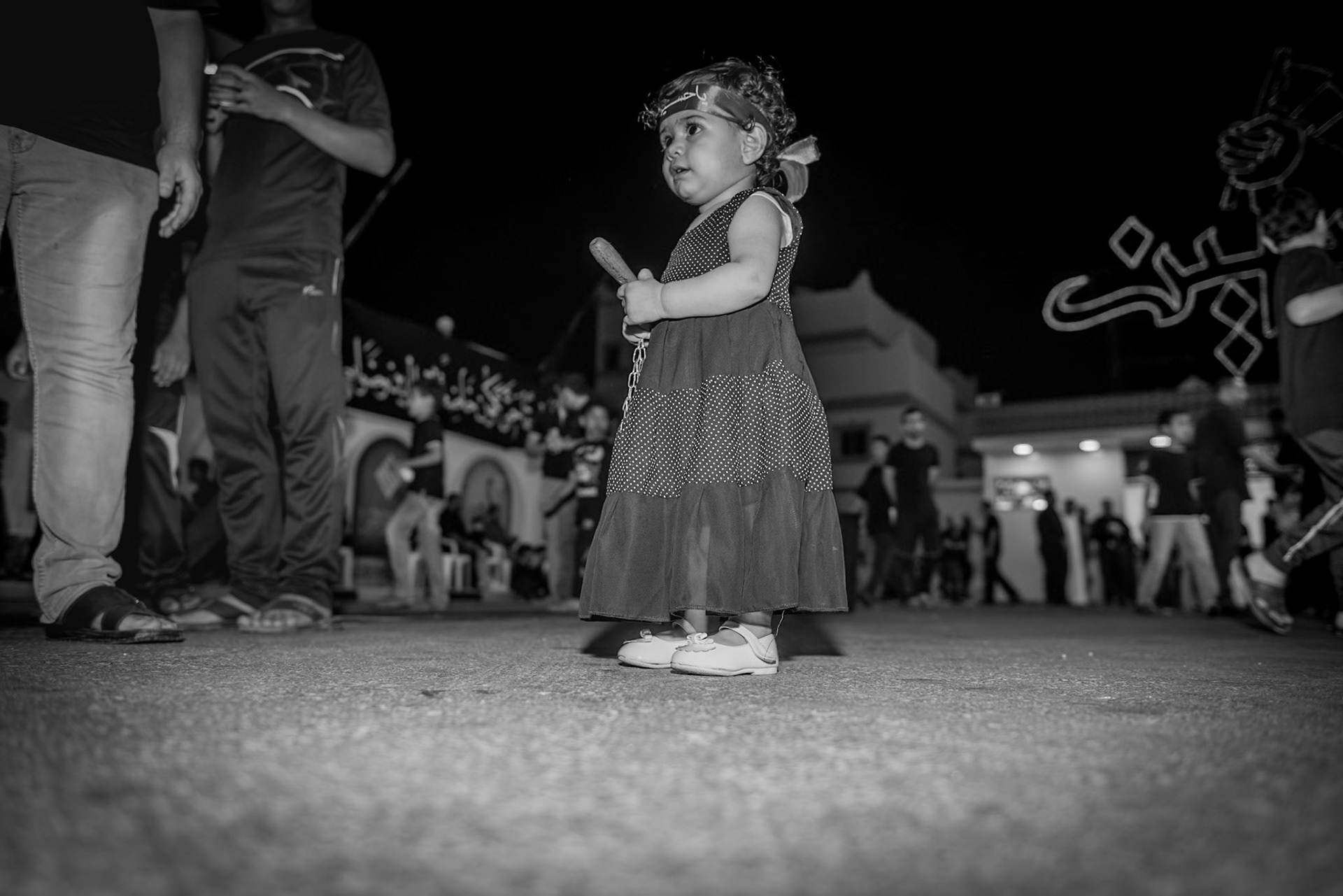
These images, taken in Karbabad during the Ashura of 2015, offer a unique and intimate glimpse into one of the most important commemorations in Shia Islam. Ashura, which means “the tenth” in Arabic, refers to the 10th day of Muharram, the first month of the Islamic lunar calendar. This day marks the martyrdom of Imam Hussein, the grandson of the Prophet Muhammad, in 680 AD at the Battle of Karbala. His death is mourned by millions around the world as a symbol of resistance against oppression and the struggle for justice. The quiet dignity and solemnity of the rituals in Karbabad emphasize symbolic acts of remembrance over physical displays of pain. Particularly striking are the young participants using light chains, or Zanjeer, without blades, in a symbolic gesture that connects them to the larger tradition of mourning. These lighter Zanjeer, used by children and adults alike, demonstrate a form of devotion that is deeply rooted in spirituality and reflection, rather than physical self-harm. This challenges common misconceptions about the ceremony and highlights the diversity of its practice. The photographs capture a range of emotions across different ages and genders—young children learning from their elders and men performing rhythmic chest beating. These moments are infused with a deep sense of community and shared purpose. The streets of Karbabad, filled with people coming together in unity, provide a localized context that emphasizes the peaceful and reflective nature of Ashura as observed here. From the serene faces of the elderly, shaped by years of ritual, to the curiosity and reverence of the younger generation, these images not only document the rituals but also tell a broader story of faith, memory, and cultural identity. They reveal the subtle yet powerful ways Karbabad’s cultural identity infuses the universal story of Ashura with a deeply personal touch.


























































